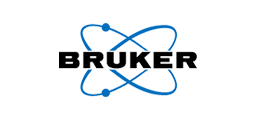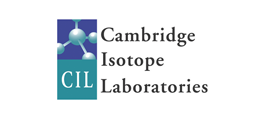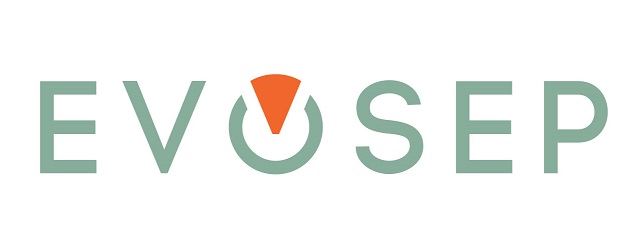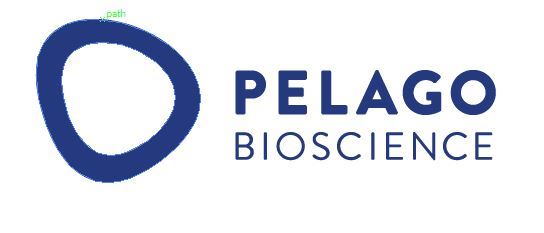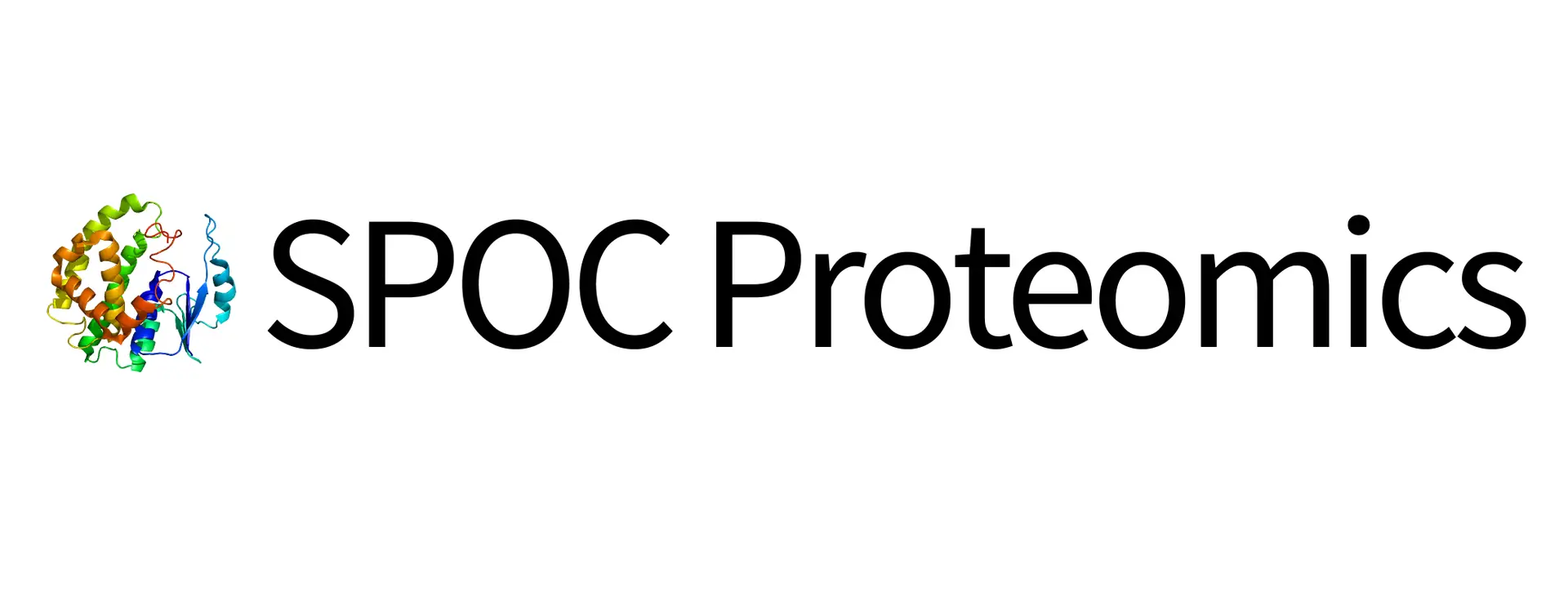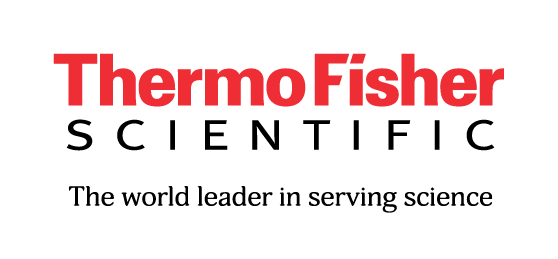humans of hupo |
Each month we will highlight a member of HUPO. A diverse group of researchers representing different career stages, disciplines, geographical locations, and ethnicities will be invited to submit a profile for the monthly highlight. This initiative will improve visibility of HUPO members, advertise research and enhance the HUPO community.
Kathryn Lilley, UK
I am a research group head and full professor in the Department of Biochemistry, University of Cambridge, UK. How did you get started in the field of proteomics? I managed a protein sequencing core facility for many years and was very frustrated that most of the time I got negative results. I read about mass spectrometry based protein identification in the late 90’s and was hooked! I moved to Cambridge in 2000 to a newly formed proteomics facility. It was a very steep learning curve for me as I little experience in peptide/protein mass spectrometry and even less in quantitative biology. Early on, I was concerned about how to adequately design proteomics experiments such that they were appropriate powered. I think this is still a problem 20 years on. I was also sceptical of studies that claimed to have purified protein complexes, and subcellular organelles and strived to determine the best way to distinguish true components from contaminants. These two concerns formed the basis of my research programme early on, and still dominate life in my lab! What does being a member of HUPO mean to you? I have been a member of HUPO for many years. I have not been formally involved with many initiatives - I wish I had more time to devote to HUPO. HUPO represents a fabulous community of people of selflessly come together to tackle the major challenges in our field. The proteomics field has transitioned from a technique carried out by core groups often through collaboration to be much more democratised and carried out more as a commodity. This is great for the field, but requires clear guidelines for novices. One of HUPOs roles in to establish, and disseminate best practice. Through HUPOs different initiative, some of the larger problems are being tackled on a scale that can only be undertaken by a worldwide effort. Being a member of this community is therefore very important to me. Making new friends and collaborators through HUPO and meeting old friends at the annual conferences also means a lot to me. I think the HUPO community is one of the most welcoming and supportive that I know. We should be the envy of others and show how it can be done. What makes your research program exciting and unique? My group pioneers subcellular omics approaches. While many proteomics studies focus on changes in protein abundance as readouts of system responses to perturbations, we have demonstrated that protein relocalization—without accompanying changes in net abundance—is equally critical. To interrogate subcellular proteomics and the differential behavior of proteins in discrete subcellular niches, we have developed a suite of tools. These include approaches that generate cell-wide protein maps per experiment without requiring genetic manipulation, such as proximity tagging or large-scale organelle pull-downs. While these complementary methods offer valuable insights, they can introduce sampling bias across subcellular compartments and lack the scalability needed to test multiple conditions or to be applied across diverse organisms. Our methods operate in a system-agnostic manner and have recently yielded exciting data with collaborators, including mapping subcellular changes during human parasite infection. We continue to extend our methodological capabilities—for example, by mapping both the subcellular transcriptome and proteome from the same sample. To support widespread adoption, we create open-source informatics tools accompanied by robust documentation that facilitates implementation by other researchers. What are your interests outside the lab? My job is very stressful – not just the proteomics bit – but also the duties of a senior academic within my university. Ever since early childhood I have been a singer. If I don’t sing I get very miserable indeed. It is the one thing I can concentrate on and block everything else out. I don’t get to sing as much as I would like. Thankfully for my lab, I don’t sing at work – but belong to various choirs around Cambridge. I am also a keen gardener and do 5 minutes gardening, weather permitting, every morning before leaving from work. Not only is this very therapeutic, but I have various gardening ‘experiments’ that I keep an eye on. Where do you envision the field of proteomics in the next 10 years? The proteomics community and cell biologists in general have moved away from one gene one protein function. There will be an increasing need to studying protein behaviour at the level of individual proteoforms. The functional significance of post translational modifications will take centre stage, informing not only our understanding of basic processes, but design of therapeutics and genetic engineering. Being able to characterise individual proteoforms at the single cell level, may still be a dream, but will be an actuality within 10 years. The role of AI in understanding proteoform function cannot be underestimated, but the community needs to come together to provide crucial data that will form the basis of the AI models. I do not consider current proteomics approaches sufficient to deliver necessary data and I the next 10 years I see the proteomics moving away from mass spectrometry as the go to technique, with complementary methods that deliver data on native isoforms increasing in prevalence. The transcriptome does not equal the proteome, we all know this, but transcriptomes has been the surrogate for the proteome largely because of pragmatic reasons, to do with scalability and sensitivity. Application of antibody /aptamer-based identification methods are increasing at a pace especially in a clinical setting., but these methods are only as good as the precision and depth of reagents. I expect that well within 10 years, the repertoire available reagents will balloon, making these complementary approaches much more comprehensive, and the throughput of proteomics methods equalling that of genomics. Adán Pinto-Fernández, UK
I am a Group Leader and Career Development Fellow at the Nuffield Department of Medicine, University of Oxford (UK), where I also co-lead the Lipidomics Facility. My research group investigates how ubiquitin and ubiquitin-like modifiers regulate immune signalling and cancer progression. How did you get started in the field of proteomics? During my first postdoctoral position in the laboratory of Prof. Olivier Feron at UCLouvain (Brussels), I investigated the mode of action of a novel photosensitiser we had discovered (OR141). This involved profiling ubiquitylated proteins and deubiquitylating enzymes using dedicated ubiquitomics and chemoproteomics workflows. I was immediately captivated by the depth and versatility of proteomic technologies in uncovering complex mechanistic insights in biology. This early experience laid a strong foundation for the research questions I continue to explore today. What does being a member of HUPO mean to you? Being part of HUPO connects me to a vibrant international community of scientists driving progress in proteomics across a wide range of disciplines. HUPO’s focus on collaboration, openness, and innovation strongly reflects the values I promote through my own research. It offers an excellent platform for staying informed about new developments, exchanging ideas, and actively contributing to the global advancement of the field.What makes your research programme exciting and unique? My group integrates ubiquitomics, chemoproteomics, and, more recently, immunopeptidomics to investigate how the ubiquitin system shapes immune responses, particularly in cancer. We operate at the intersection of technology development and translational research, frequently collaborating with pharmaceutical partners to explore therapeutic targets. I’m particularly excited about our recent work on ISGylation and interferon-driven immune evasion, which may open up new avenues for cancer immunotherapy and antiviral strategies. On the technological front, we have been especially engaged in developing highly sensitive and high-throughput activity-based proteomics workflows, expanding the toolkit available for profiling enzyme activity in complex biological systems. What are your interests outside the lab? Outside the lab, I enjoy spending time with my son. I’m also passionate about cycling, photography, baking bread, and live music. Travelling with a sense of purpose, whether for science or exploration, has always inspired me. These activities help me recharge, stay curious, and creative. Where do you envision the field of proteomics in the next 10 years? I believe proteomics will become increasingly embedded in clinical decision-making and drug discovery, driven by scalable, technology-enabled platforms. Advances in machine learning and open data sharing will play a key role in streamlining data analysis and interpretation, helping to unlock the full potential of proteomic datasets. I also dream of seeing affordable, user-friendly instrumentation that replaces immunoblotting altogether—bringing proteomics to every lab bench.Kristin Burnum-Johnson, USA
I currently lead the Functional and Systems Biology Group at the Environmental Molecular Sciences Laboratory (EMSL) located at the Pacific Northwest National Laboratory (PNNL) in Richland, Washington, USA. As a Department of Energy-Office of Science national user facility, EMSL provides researchers with advanced tools and expert guidance to improve their molecular-level understanding of complex biological systems. How did you get started in the field of proteomics? My journey into proteomics began twenty years ago during my Ph.D. studies in Biochemistry at Vanderbilt University, where I had the privilege of working in Professor Richard Caprioli’s laboratory. His laboratory was at the forefront of developing Matrix-Assisted Laser Desorption/Ionization (MALDI) imaging mass spectrometry, an analytical technique that enables detailed spatial mapping of proteomes within tissues. I found this method fascinating because of its ability to visualize the complex landscape of protein distributions. This foundational training paved the way for my postdoctoral fellowship in Dr. Richard Smith’s laboratory at PNNL. During this time, I gained valuable experience performing high-sensitivity analysis of complex biological samples using Liquid Chromatography-Tandem Mass Spectrometry (LC-MS/MS) for deep proteomics. Currently, my research at PNNL combines spatial and deep proteomic techniques to study complex biological systems. What does being a member of HUPO mean to you? Being a member of HUPO is a vital part of my career because it connects me to a global community of proteomics researchers. HUPO provides opportunities to collaborate, share ideas, and stay informed on research developments, which helps advance the field and translate proteomics discoveries into practical applications. It is meaningful to be part of an organization that supports scientific progress and promotes international connections across disciplines. What makes your research program exciting and unique? My research program is exciting and unique because it combines metabolomics, lipidomics, and proteomics using advanced MALDI imaging and LC-MS/MS technologies to understand biomolecular pathways. Our research uses cutting-edge analytical tools that generate spatial metabolome and proteome-rich data. We have developed the Metabolome-Informed Proteome Imaging (MIPI) workflow to explore molecular microhabitats within complex biological systems. By utilizing MALDI imaging, we accurately map metabolite locations and identify microscale activity hotspots. Within these hotspots, we use microscale proteomics to identify the enzymes responsible for these activities, utilizing microfluidic technologies for sample processing followed by detailed LC-MS/MS proteomic analysis. This approach helps us better understand the spatial and temporal dynamics of chemical processes and reactions among metabolites, lipids, and proteins that drive biological functions. What are your interests outside the lab? Outside of the laboratory, I enjoy spending time with my family, especially when traveling and making memories with my husband and 11-year-old daughter. It is fun to see my daughter experience new places, cultures, and cuisines, which add to our adventures. I also have a deep appreciation for nature and like spending time outdoors. Whether I am hiking through lush forests or simply appreciating the beauty of a natural landscape, I am endlessly fascinated by the world around us. Where do you envision the field of proteomics in the next 10 years? Over the next decade, I foresee transformative advancements in proteomics, leading to an unprecedented integration of spatial, temporal, and functional analyses. Supported by cutting-edge multi-omics technologies and the computational power of artificial intelligence (AI), proteomics will play a crucial role in understanding complex biological systems. This development will be characterized by the seamless integration of proteomics with complementary measurements such as genomics, transcriptomics, lipidomics, metabolomics, and detailed studies of protein post-translational modifications. Together, these interconnected data streams will form a comprehensive framework for uncovering the complexities of biomolecular pathways and biological systems. Rapid advances in proteomics and AI will improve data analysis, offering deeper insights through predictive modeling across many scientific fields, including personalized medicine, bioeconomy applications, and drug discovery. I believe that improved automated sample processing and imaging technologies will expand research opportunities, allowing high-throughput, detailed studies of biomolecular interactions in their natural environments. Through collaborative efforts and innovative research, proteomics will continue to strengthen its essential role in driving scientific discoveries. Francis O’Reilly, USA
I am a Stadtman Tenure-Track Investigator at the Center for Structural Biology within the National Cancer Institute (NCI), located in Frederick, Maryland. My research focuses on the intersection of structural biology and proteomics, primarily on developing the technology of crosslinking mass spectrometry to map the architecture of protein complexes inside the cell. How did you get started in the field of proteomics? My journey into proteomics began during my PhD at EMBL Heidelberg, where I worked under the guidance of Anne-Claude Gavin and Martin Beck. I worked on combining proteomics with cryo-electron microscopy to improve the throughput of structural analysis, focusing on crude cell lysate fractions. This ambitious work was a moderate success, but both technologies were in a period of dramatic technological advances, which motivated me to pursue a career in method development at this interface. I moved to do my postdoctoral research at the Technical University of Berlin with Juri Rappsilber, a pioneer crosslinking mass spectrometry, where together we made huge conceptual and technical advances in the technique to identify and structurally characterize protein complexes both in vitro and inside cells. What does being a member of HUPO mean to you? Being a member of HUPO connects me with a global community of proteomics researchers, including with my sub-field of structural proteomics. The HUPO conferences provide a platform for collaboration and knowledge exchange that is vital to maintain our research at the cutting-edge. HUPO's commitment to promoting proteomics research aligns with my own goals of understanding complex protein interactions and their implications in health and disease. What makes your research program exciting and unique? My research program brings together structural proteomics, crosslinking mass spectrometry, and cryo-electron microscopy to chart protein interactions directly within cells. We are particularly interested in how proteins assemble into molecular machines and how these assemblies are regulated in diseases such as cancer. By developing new crosslinking mass spectrometry tools, we generate dynamic, systems-level maps of protein interactomes. Mass spectrometry-based proteomics complements other structural biology techniques by excelling in the analysis of heterogeneous samples, wide-ranging protein abundances, and condition-specific changes. What sets our lab apart is that we’re embedded within a Structural Biology department, where we can validate the structures of newly discovered protein interactions. What are your interests outside the lab? Outside the lab, most of my time is happily spent with my young children, who keep me busy and entertained. I enjoy being outdoors, especially cycling and orienteering, a sport that combines navigation with endurance. These activities help clear my mind and often spark fresh ideas. Where do you envision the field of proteomics in the next 10 years? In 10 years, I hope the field of structural proteomics will have achieved its goal of comprehensive, residue-level protein interaction networks inside cells. The advent of fast, comparative whole-cell interactomes will transform biological research. Mapping interaction networks across cell types and disease states will offer unprecedented insights into both health and disease. Achieving this will require continued technical innovation, including faster and more sensitive mass spectrometers. I also foresee this approach evolving in close partnership with protein structure prediction tools. Structural restraints from crosslinking data will be essential for both training predictive models and validating structures in biologically relevant contexts. As these methods become more scalable and standardized, I anticipate growing interest from industry, which will further broaden the impact and accessibility of structural proteomics. Yu-Ju Chen, Taiwan What is
your current position and location? What is
your current position and location?I am currently a Distinguished Research Fellow at the Institute of Chemistry, Academia Sinica in Taiwan, where my primary focus is on research. I also served as the Director of the Institute for nearly nine years. In addition, I hold an adjunct professorship in the Department of Chemistry at National Taiwan University, where I teach and supervise students. How did you get started in the field of proteomics? My PhD training was in photoionization mass spectrometry at Iowa State University, under the supervision of Prof. Cheuk-Yiu Ng. Due to family reasons, I returned to Taiwan and conducted postdoctoral research in laser photolysis and time-resolved FT-IR absorption with Prof. Yuan-Pern Lee at National Tsing Hua University. Joining Academia Sinica marked a turning point in my academic journey. I was drawn to the vibrant biological research in the life science division, which led me to shift my focus to biological mass spectrometry. I began with MALDI-based DNA and SNP detection projects and later embarked on my proteomics journey by learning 2D-gel electrophoresis from Prof. Shui-Tein Chen at the Institute of Biological Chemistry. Working on disease-related protein profiling—such as for gastric cancer and SARS—sparked my curiosity and passion for the complexity of the proteome and its role in disease. The gap between the limited sensitivity of 2D-gel methods (detecting only tens to hundreds of proteins) and the true depth of the proteome motivated me to develop new methodologies aimed at more comprehensive proteomic analysis in disease research. What does being a member of HUPO mean to you? Being a member of HUPO has been both a source of inspiration and an incredibly meaningful part of my scientific journey. For me, HUPO represents a vibrant global community of passionate scientists dedicated to advance the frontiers of proteomics and translating discoveries to improve One Health. Through HUPO, I’ve gained so much—scientific exchange, international collaborations, and the chance to highlight research from Taiwan/Asia on the global stage. From member, Council member to Executive Committee (EC) member, HUPO has shaped my leadership development since the early stages of my career. Serving as HUPO President in 2021–2022 was an unexpected yet memorable chapter. Leading the organization through post-pandemic uncertainties was a remarkable team effort, and together we not only overcame logistical challenges but also strengthened HUPO’s financial foundation. I am especially grateful for the mentorship of Past President Steve Pennington and Vice President Susan Weintraub, as well as the dedicated collaboration of our Executive Committee team—Henning Hermjakob, Peter Hoffmann, Jennifer Van Eyk, Uwe Völker, Mathieu Lavallée-Adam, and Justyna Fert-Bober. What makes your research program exciting and unique? Our research program focuses on one of the most complex and fascinating areas of the human proteome—the membrane proteome and its extensive modifications, particularly extracellular glycosylation and intracellular phosphorylation. This subcellular space plays a critical role in regulating cellular functions and disease phenotypes, yet remains analytically challenging. That challenge is exactly what keeps our work dynamic and exciting—we are driven to develop innovative methodologies to fully explore the proteomic landscape and uncover the interplay of these modifications. I’m fortunate to have built a strong collaborative network that allows us to apply these proteomic tools to uncover disease mechanisms and identify key proteins involved in signal transduction. Through the Taiwan Cancer Moonshot program, I work with an incredible multi-disciplinary team spanning seven academic and medical institutions. Together, we are using proteogenomics to break down barriers in cancer research. I truly enjoy the collaborative spirit of this work—learning from each other and advancing together as a team. What are your interests outside the lab? Outside the lab, one of my greatest joys is traveling with my family. I truly enjoy experiencing different cultures and cuisines—a wonderful way to create lasting memories. This love for food also carries into my weekends, as I enjoy cooking at home and exploring new recipes and flavors. It’s a fun and creative way to relax and share joy with loved ones. Another personal interest of mine is watching films and TV shows, especially those that tell compelling human stories. In the evenings, I often work on the computer while having a show playing in the background. These stories offer a glimpse into different lives and experiences, allowing me to momentarily step into another world. It’s a simple yet effective way for me to unwind and find balance amidst the demands of research. Where do you envision the field of proteomics in the next 10 years? Despite the many successes in proteomics technology and discovery, there is still significant potential to be realized in translating these advances into real-world impact. Over the next 10 years, I envision proteomics playing a central role in bridging molecular insights with actionable outcomes across multiple domains. In clinical care, proteomics will increasingly inspire new strategies for early disease detection, patient stratification, and treatment monitoring, paving the ways for more precise and personalized medicine. In preventive medicine, the identification of proteomic markers could enable risk prediction before disease onset, shifting the focus from treatment to prevention. Beyond human health, proteomics will also likely expand its influence in other areas, such as precision agriculture—optimizing crop resilience and yield through molecular profiling, and food safety—detecting contaminants or monitoring food quality. To realize this vision, we not only need continued innovation in sensitivity, throughput, and data integration, but also require efforts to translate research assays into regulatory-compatible applications. This will require strong collaboration among scientists, clinicians, and industry partners. Ultimately, the next decade will be about transforming proteomic knowledge and technologies into practical solutions that improve both human life and planetary well-being. Markku Varjosalo, Finland
I am a tenured Research Director and Professor at the Helsinki Institute of Life Science (HiLIFE) & Faculty of Medicine at the University of Helsinki, where I also serve as the Scientific Director of the Helsinki Proteomics Center. My group focuses on molecular systems biology and quantitative proteomics, using cutting-edge mass spectrometry to decode protein interactions, signaling pathways, and disease mechanisms. Finland might be a small country, but we make up for it with world-class science, and I’m proud to lead a lab that pushes proteomics forward on a global scale. How did you get started in the field of proteomics? I started in genomics, working with Jussi Taipale, convinced that DNA held all the answers. But the deeper I got, the more I realized that if you want to understand biology in action, you have to study proteins. Then I heard Ruedi Aebersold talk about mass spectrometry-based proteomics, and I knew I had found my calling. I joined his lab at ETH Zurich for a postdoc, where I saw firsthand how proteomics could revolutionize our understanding of complex biological systems. After an intense few years immersed in cutting-edge proteomics, I was recruited back to Finland to establish my own lab and develop the country’s proteomics capabilities. That decision set my career path, and I haven’t looked back since. What does being a member of HUPO mean to you? HUPO is not just a scientific society, it’s a proteomics ecosystem. I’ve been an on-and-off member for 15 years, but now I’m here for good. What makes HUPO special is the people—passionate, slightly eccentric, and always pushing the boundaries of what’s possible. From the first HUPO meeting I attended, I was struck by how approachable and supportive people were; even the Superstars in the field would chat over a coffee or drinks as if we were old friends. The meetings are unlike any other, packed with cutting-edge science but also filled with energy and collaboration. HUPO has shaped the field and continues to drive it forward, and I’m proud to be part of that momentum. Whenever a new student or postdoc joins my lab, I tell them: “If you want to understand proteomics beyond the papers, come to a HUPO meeting.” That’s where the magic happens. What makes your research program exciting and unique? Our lab is all about mapping protein networks and understanding how molecular systems function in health and disease. We have spent years charting human protein interactions, first completing the interaction landscape of protein kinases and now approaching a comprehensive map of human transcription factors. But we’re not just interested in fundamental biology. A major focus of our lab is clinical proteomics, particularly in cancer and primary immunodeficiencies, where we integrate mass spectrometry with patient-derived samples to find biomarkers and therapeutic targets. Finland provides a unique edge in this research, as we have access to the best patient registries in the world, allowing us to link deep proteomic profiling with long-term clinical data. Combining large-scale proteomics experiments, advanced computational approaches, and direct clinical applications makes our work both scientifically exciting and translationally impactful. At the end of the day, the goal is not just to study disease mechanisms but to use proteomics to change how we diagnose and treat patients. What are your interests outside the lab? Staying fit is an essential part of my routine, but my true off-duty passion is breeding and working with wirehaired dachshunds, something I’ve been doing for nearly three decades. My competitive streak doesn’t stop at science—I’ve had our dachshunds win both beauty and working championships in most European countries. There’s something rewarding about perfecting a lineage, balancing intelligence, structure, and drive. It’s also a nice contrast to the science; when an experiment or grant fails, at least I can rely on a well-trained dachshund to perform. Science and dogs may seem unrelated, but both require patience, strategy, and the ability to interpret signals (though mass spectrometry is slightly easier to troubleshoot than a stubborn dachshund). Where do you envision the field of proteomics in the next 10 years? Proteomics has always been full of potential, but now we are truly delivering on the promise. In the next decade, mass spectrometry will continue to get faster and more sensitive, allowing us to measure entire proteomes in unprecedented detail. Multiplexing and proteoform characterization will become routine, giving us deeper insights into how proteins function in different biological states. Clinical proteomics will shift from a research tool to a standard part of medicine, helping guide diagnostics and personalized treatments. And AI will be at the center of it all, transforming how we design experiments, interpret data, and integrate proteomics with other omics layers. We are reaching the point where we can map everything inside a single cell, track dynamic protein changes in real time, and use proteomics to directly influence patient care. The golden age of proteomics has arrived, and I’m excited to see where it takes us next. Would you agree to share your Humans of HUPO profile on HUPO social media/ social media tags? Yes Morten Thaysen Andersen, Australia What is your current position and location? My principal affiliation is with Macquarie University, Sydney, Australia where I am a tenured Associate Professor and Head of the Analytical Glycoimmunology group. I am an Australian Research Council Future Fellow, which means that I currently focus mostly on research activities. As a Visiting Professor I also run a satellite lab in Clinical Glycoproteomics at the Institute for Glyco-Core Research (iGCORE) at Nagoya University, Japan where I spend around 20% of my time over the (too) hot Australian summer months. How did you get started in the field of proteomics? I started my research career in the early 2000s in the Protein Research group at the University of Southern Denmark in Odense, Denmark. Here I was incredibly lucky and privileged to receive training from pioneers in protein chemistry and proteomics including Profs Peter Højrup, Martin Larsen and Ole Jensen, opening a world of opportunity. Given my growing interest in protein glycosylation, I then relocated to Prof Nicolle Packer’s Glycomics lab at Macquarie University, Sydney, Australia. After having completed a few postdoc positions under Nicki’s outstanding guidance, I decided to combine my background and experience in proteomics and glycomics and established my own research program in glycoproteomics in 2017. What does being a member of HUPO mean to you? Knowledge sharing, community spirit, genuine support, international networks and collaborations, career opportunities, friendships and fun. Having attended HUPO meetings for almost 20 years and having been part of different HUPO-based initiatives including the Human Glycoproteomics Initiative (HGI), the HUPO community has played a profound role in my career. In my early career years, I benefitted immensely from receiving ECR travel grants and being selected for talks at HUPO meetings. I remember learning so much from those first international conference experiences where I meet pioneers and established networks within my discipline. More recently, I have enjoyed contributing to HUPO through various activities including being part of the organising committee for the 18th HUPO World Congress in Adelaide, 2019 and by chairing the HGI since 2021. What makes your research program exciting and unique? My research program employs glycoproteomics as well as other -omics technologies and methods in glycoimmunology to uncover the glycobiology of our innate immune system in health and disease. Glycoproteomics has come a long way since I entered the field in the early 2000s, and the technology can now provide detailed biochemical insights into the heterogenous (and still largely unexplored) glycoproteome directly from complex biological specimens. My research program has discovered new previously overlooked glycoproteome features in various innate immune cell populations of functional importance in immune-related disorders including cancer, infection and inflammation. What are your interests outside the lab? Seeing and experiencing other countries and cultures have always fascinated me. Research careers are fortunately well aligned and compatible with such interests and I love the many international aspects of academic pursuit. For example, my current role as Visiting Professor in Japan gives me a chance to learn more about this amazing country and its history and society. Amongst other interests, I am fond of the outdoors and spending time in nature. Being an avid runner and swimmer, I am often found navigating Sydney’s many beautiful national parks and waterways. Where do you envision the field of proteomics in the next 10 years? As proteomics science continues to push the boundaries for what is possible with incredible sensitivity, speed, accuracy and reproducibility of conventional proteomics type experiments, there are still analytical challenges waiting to be tackled in my own area of glycoproteomics. Large-scale glycopeptide analysis remains challenging and is therefore still largely restricted to specialised laboratories. My hope is that in 10 years glycoproteomics has become a robust and reliable quantitative technique that enables the wider proteomics community to enter the glycoproteomics field and help address the many pending research questions in glycoscience. Julio Saez-Rodriguez, UK
I am Head of Research at the European Bioinformatics Institute (EMBL-EBI), and Professor on leave, Heidelberg University. How did you get started in the field of proteomics? If you consider antibody-based measurements as proteomics, in my postdoc with Peter Sorger and Doug Lauffenburger, working with Leonidas Alexopoulos using Luminex-based assays to study signal transduction. In terms of mass-spec based proteomics, we started to work at EMBL-EBI via the work of a PhD student, Camille Terfve, with Pedro Cutillas and Ruedi Aebersold groups, around 2011. What does being a member of HUPO mean to you? HUPO is a great community to bring together the proteomics community in a broad sense, for someone coming from computational biology, is a unique forum to see where the field is evolving in terms of experimental technologies and applications. What makes your research program exciting and unique? How exciting or unique our research is, is for others to say, but we are mostly interested in is developing and applying methods to extract disease mechanisms from proteomics and other omics data, with a focus on leveraging exiting prior knowledge of molecular mechanisms and machine learning and bioinformatic methods for this. We then make our methods available to the community as free open-source tools and resources, and it brings a lot of joy when others find our tools useful in their research. The impressive developments of proteomics challenges and inspires our methods development. What are your interests outside the lab? I like to travel and see new places and meet new people - and I get to do that along around conferences and other work trips. Otherwise simple things, being with family, food (cooking and eating), and doing sports out in nature. Where do you envision the field of proteomics in the next 10 years? If the current rapid developments continue, I foresee increasingly complex and rich proteomics data sets, in term of sample size, coverage, and protein-modifications, as well as an increase in resolution, towards single-cell and spatial level information. The increased complexity will require more sophisticated and efficient bioinformatic methods using AI and other computational strategies. Proteomics will become more broadly used by the biological and clinical communities, and hopefully all of this will be done under the principles of open-science. Ole Nørregaard Jensen, Denmark
I am professor at the Department of Biochemistry and Molecular Biology at SDU – University of Southern Denmark, Odense, DK. I left Denmark for the US in 1990 to earn my PhD, and afterwards I worked as a postdoc in Germany, returning to Denmark in 1997. I am a native of Odense so I consider myself lucky to have landed this dream job in my home city. How did you get started in the field of proteomics? I got started in protein science and mass spectrometry in the late 1980’es when I pursued my Master’s degree project in prof. Peter Roepstorff’s research group at SDU, Odense. I applied LC separations and plasma desorption time-of-flight mass spectrometry (PDMS) to study mutant hemoglobins in blood samples obtained from patients. I learned all the basics of protein chemistry and mass spectrometry. I was lucky to also get to travel to Manchester, UK to apply tandem mass spectrometry for peptide sequencing by FAB MS/MS on a huge 4-sector instrument. This was around the time when the ionization methods MALDI and ESI were developed and I used these new techniques during my subsequent PhD-studies at Oregon State University, USA, and my post-doctoral research projects at EMBL, Germany. The mid-1990’es were the pioneering days of proteomics and this research field has been exciting and developing ever since! I returned to SDU and Odense in 1997 as an assistant professor. In December 2024 we celebrate the 50th anniversary of biological mass spectrometry research at SDU with the 2-day CelebrateMS Conference! What does being a member of HUPO mean to you? I joined HUPO in the early days of the organization and I have been involved as a HUPO Council member and as a member-at-large of the HUPO Executive Committee. There was (and still is) a lot of excitement to develop and share new methods and protocols to study the proteome from many angles. HUPO plays an important role in creating a community feeling for members, particularly through the many initiatives, interest groups, and sub-committees. I was involved in educational programs and in organizing HUPO training courses during the 2000’s. There is still a need for training and education of early career scientists in the fundamentals of protein chemistry and mass spectrometry, and HUPO continues to play an important role in this context. What makes your research program exciting and unique? I study the roles of post-translational modifications on protein structure and function using mass spectrometry. The variety, diversity and specificity of post-translational modifications in regulation of protein functions and interactions is incredible. My research group explores how ion mobility spectrometry (IMS) and tandem mass spectrometry can reveal and distinguish multiple co-existing post-translational in chromatin associated proteins, particularly histones. It is intriguing that ion mobility spectrometry can separate peptide and protein isomers of identical mass, allowing us to distinguish same-type modifications at different amino acid residues within proteins. I have no doubt that the combination of IMS and MS/MS will play a major role in elucidating proteoforms. What are your interests outside the lab? I am interested in geography, architecture and experiencing different cultures and gastronomy. As a scientist I am privileged to travel at regular intervals so I have visited beautiful places and good colleagues at all continents of the world, except Antarctica. I also enjoy relaxing at home, reading a book, visiting friends and family, or walking our dogs. My wife and I live in the countryside just outside Odense. I like maintaining our house, garden and a small forest. I follow the European football (soccer) leagues and I am of course a fan of Odense FC (OB). Where do you envision the field of proteomics in the next 10 years? In 10 years’ time we will still study post-translational modifications of proteins, because of their complexity and key roles in regulation of protein networks in health and disease. I envision that the IMS and MS technology has advanced to enable fast and comprehensive PTM studies of extremely small sample amounts from human tissues and tumors. Developments in computational methods and deep learning, including quantum computing, will transform proteomics data analysis and data mining beyond my imagination. Proteomics research will rely on coordinated interdisciplinary efforts of larger research teams and advanced AI systems, from experimental design to data acquisition and interpretation. Proteomics will deliver on its promise to identify biomarkers, drug targets and support protein design in drug development, and have a real impact on human quality of life. Lindsay Pino, USA%20square.JPG) What is your current position and location? I am the CTO and cofounder of Talus Bio, located in Seattle WA USA. How did you get started in the field of proteomics? I first got interested in proteomics during high school after reading poetry written by Mattie Stepanek, who had mitochondrial myopathy. I was shocked and saddened that we knew exactly the mechanism of his disease, but had no way to treat it. This sparked my interest in biochemistry and molecular biology, which led to undergraduate research using proteomics to study mitochondrial ribosomes. After a few side adventures, including teaching TOEFL in South Korea for two years, I landed at Dr. Steve Carr's Proteomics Platform at the Broad Institute and really cemented by passion for proteomics there. What does being a member of HUPO mean to you? The community and support that HUPO provides is truly special. Beyond amazing technical education and staying up-to-date with the latest research, HUPO has a very dedicated interest in helping mentor, guide, and inspire early career scientists beyond the conference itself, which I think is pretty unique among professional societies. What makes your research program exciting and unique? In my lab at Talus Bio, we're putting proteomics front-and-center in drug discovery. Proteins are the target and the mechanism for so many therapeutics, however the power and scale of proteomics is rarely used in the early stages of hit discovery. Chemical proteomics is giving us opportunities to target proteins that have previously been written off as "undruggable", and this will mean we can tackle diseases and conditions that were considered impossible to treat. What are your interests outside the lab? I've recently hooked up my Kindle to my library card, so I've been reading a lot lately! Right now, I'm working through "Living Medicine" and "Dragonriders of Pern", so a mix of non-fiction and sci-fi/fantasy. I also like running 5ks around the local park here in Seattle, and every Saturday morning I take my two year old son to the Woodland Park Zoo in Seattle. Where do you envision the field of proteomics in the next 10 years? I would like to see proteomics talked about more broadly in society. Like how "DNA" and "sequencing" are fairly household terms, and now "mRNA" is pretty widely understood, I want to see "proteomics" gain that level of discourse in society. To do that, I think our challenge for the next decade will be to branch out into more diverse scientific collaborations to demonstrate the value of proteomics, engage more frequently with "stakeholders" who aren't scientists themselves, and showcase examples of how proteomics can transform human health. Jennifer Van Eyk, USA
I am the Director of the Advanced Clinical Biosystems Research Institute, Co-Director of Cedars-Sinai Precision Health, Founder and Director of Cedars-Sinai Precision Biomarker Laboratories, Basic Science Director of the Barbra Streisand Women’s Heart Center and Erika Glazer Endowed Chair in Woman’s Heart Health. How did you get started in the field of proteomics? The recognition that troponin which regulates muscle contraction was highly modified in both health and disease and that these forms circulate in the blood of individual with heart disease. Finding methods that allowed us to quantify the disease induced modified forms of the contractile proteins started us on the road to proteomics. What does being a member of HUPO mean to you? It is (our only) proteomics society and proteomics is important to understand life and to impact medicine. It brings together our community. What makes your research program exciting and unique? The scientists who have come together in our group to try to change how medicine is practiced. They are able to dream big, work with wonderful clinical and industry partners to try to impact medicine. No dream is too big. What are your interests outside the lab? My family. But also swimming, reading, painting, hiking and cross country skiing. Where do you envision the field of proteomics in the next 10 years? I envision proteomics making an impact beyond human disease to all aspect of the world. Teck Yew Low, Malaysia
I am an Associate Professor at the National University of Malaysia (UKM) in Kuala Lumpur. My wife and I returned to my home country in 2018. Additionally, I serve as the Secretary-General of Asia Oceania HUPO (AOHUPO). How did you get started in the field of proteomics? I began my journey in proteomics in the early 2000s as a postgraduate student at the National University of Singapore, working under the guidance of Professor Max Chung. My initial research focused on using 2D gels to compare rat models of liver cirrhosis. Realizing that LC-MS was poised to become the future of proteomics, I transitioned to Newman Sze's lab. I later moved to CEBI in Denmark to work with Jens Andersen, followed by a stint with Albert Heck at Utrecht University. These experiences provided me with invaluable opportunities to work alongside some of the leading experts in the field. I am deeply grateful to have these mentors and friends, and Max and Albert have been supportive of my development until today. What does being a member of HUPO mean to you? I joined HUPO somewhat by accident when I discovered that becoming a member would give me a discounted rate for my first HUPO Congress in Madrid in 2014. However, this fortuitous decision quickly turned into something much more meaningful. HUPO introduced me to a community rich with friendship and support, which inspired me to get more actively involved. My roles as Secretary-General of AOHUPO and a HUPO diversity candidate in 2021 reflect this deepening involvement. Being a part of HUPO feels like belonging to a large, supportive family where mentorship and moral support are always available. I greatly appreciate the advice and mentorship given to me by Ho Jeong, Yu-Ju Yasushi, Terence and Xu Ping. Members like Tiannan Guo and Chris Tan have been particularly generous, providing support and access to state-of-the-art instruments. This sense of community drives my desire to bridge less developed regions to HUPO, especially in Southeast Asia, including Myanmar, where my wife is from. What makes your research program exciting and unique? What makes my research program exciting and unique is its focus on cancer biomarkers and the exploration of short and non-canonical open reading frames, which are still relatively underexplored areas in the field. I also work with clinicians, both directly and indirectly, to bridge the gap between scientific research and medical practice, even when we navigate different professional languages. My exposure to biobanks and the regulations surrounding human specimens adds more depth to my research. This region’s unique genetic background and prevalent diseases offer distinct opportunities for discovery, though working in a somewhat isolated community can make staying current with the latest developments challenging. HUPO and its members have been invaluable in helping me stay connected and informed. What are your interests outside the lab? Outside the lab, I have a deep passion for traveling, especially in Europe, where I’ve enjoyed exploring diverse cultures and landscapes. When I return to Malaysia, food hunting becomes a favorite activity as I seek out local culinary gems that reflect the rich cultural diversity of this melting pot. Hosting friends and ex-colleagues from overseas has also been a rewarding part of these experiences. Therefore, you can contact me if you happen to visit Malaysia. Photography naturally complements my love for travel, allowing me to capture the beauty of the places I visit. Additionally, I am an avid reader interested in Egypt, archaeology, and ancient civilizations, which provide a fascinating window into the past. Where do you envision the field of proteomics in the next 10 years? I envision proteomics technologies like MS, Olink, and SomaScan becoming integral to routine clinical testing, establishing them as essential tools in personalized medicine. Combining AI with proteomics, digital pathology, and MS imaging will likely revolutionize data analysis, providing faster and more accurate insights. AI could also lower newcomers' barriers to omics and multi-omics data analysis, integration, and interpretation, allowing scientists to shift from analytical tasks to more creative endeavors. Additionally, I anticipate the expansion of state-of-the-art collaborative facilities in less developed countries, offering scientists in these regions access to cutting-edge technologies and the opportunity to make significant contributions to global research. I would love to be a part of initializing this transition. As proteomics becomes more embedded in local contexts, it will be crucial in addressing region-specific challenges. In this regard, I view Albert Heck, through initiatives like PrimeXS and Proteins@Work, as a role model for facility sharing and fostering collaborative environments. Fabio Nogueira, Brazil
I am currently an Associate Professor at the Department of Biochemistry, Federal University of Rio de Janeiro (UFRJ), Brazil. Coordinator of the Proteomics Unit of the Precision Medicine Research Center and the Proteomics Laboratory of the Technological Development Support Laboratory, both at UFRJ. How did you get started in the field of proteomics? My first contact with proteomics was during my undergraduate course in Biology in a Brazilian Program of Scientific Initiation, in 2002. During this period, I was determining the proteome profile of aggregated cells from cowpea and cassava explants competent or not for somatic embryogenesis under the supervision of Prof. Francisco A. P. Campos. For this project, we did a lot of 2-Dimensional Electrophoresis, spot excision, and MALDI-TOF mass spectrometry analysis. For MS analysis, I met my supervisor Prof. Gilberto B. Domont, and the world of proteomics expanded for me. I got fascinated with the mass spectrometer and the possibilities of proteomics. From then until now, and certainly for a long time to come, I have been passionate about mass spectrometry-based proteomics, where I decided to pursue my scientific career. What does being a member of HUPO mean to you? It is an honour. My first HUPO conference was in Geneva in 2011. I am extremely happy to be part of HUPO, which addresses some of the most exciting biological questions nowadays. Also, it is impressive to follow all the technological advances in the community. Yet, the most important aspect is the people who make up this vast community. Without them, there wouldn't be such a diverse ecosystem, rich in wisdom and culture, which HUPO manages to bring together and put into interaction. I love going to HUPO conferences to witness scientific advances, but also to meet and make new friends. What makes your research program exciting and unique? My interests in proteomics are broad, from basic biology/disease to plant proteomics, developing and applying new approaches in quantitative and PTM analysis. I am happy and excited to be part of the development of proteomics and mass spectrometry in one of its most ambitious projects – The Human Proteome Project. Our lab is a member of the Chromosome-Centric Human Protein Project – chromosome 15th. Our group aims to develop frontier research in proteomics to identify and quantify biomolecules of biotechnological interest and biomarkers of certain biological states and diseases in the context of precision medicine for chronic, infectious, and rare diseases. What are your interests outside the lab? In my spare time, I like to spend it with my family, my almost five-year-old son, and friends. I like reading, movies, travelling, running, going to the beach, and, above all, meeting friends at the pub to exchange ideas. Where do you envision the field of proteomics in the next 10 years? In the next ten years, my first wish would be to see proteomics have a “social life” like genomics. On people's lips, in undergraduate courses, on television, in advertisements. With the advances in MS-based proteomics together with other omics, and artificial intelligence, I also see proteomics as having a lot of potential to change people's lives in terms of health and disease, as well as their environment. For this reason, I think proteomics will play a key role in interpreting biological phenomena, and revolutionizing precision medicine. Roland Bruderer, Switzerland
I am the Head of Research and Development for LC-MS workflows at Biognosys AG, located in Switzerland. How did you get started in the field of proteomics? My journey in proteomics began with an interest in the structures of proteins and enzyme activity assays. When Ruedi Aebersold returned to ETH Zurich during my PhD, I had my first collaborative proteomics experiment on the ubiquitylation of the kinase Aurora B. It failed but sparked my interest in MS-based proteomics research. After my PhD at ETH Zurich, I joined Ron Hay’s laboratory at the University of Dundee to learn SILAC-labeled proteomics and applied it to the SUMO modification system. I worked with iPSCs at the Wilmut laboratory in the University of Edinburgh. During that time, I gained expertise in MS instrument maintenance, acquisition, and data analysis under the guidance of Ivan Matic and Mike Tatham. Upon returning to Switzerland in 2012, I contributed to the development of DIA (Data-Independent Acquisition) methods at both Ruedi Aebersold’s lab and Biognosys. In my initial work, we developed both DIA methods and targeted and untargeted DIA analysis and benchmarked it against state-of-the-art DDA workflows. What does being a member of HUPO mean to you? My first HUPO was in Geneva in 2011. I was fascinated by the Chromosome-Centric Human Proteome Project (C-HPP), where chromosomes were assigned to countries to work on. With my growing years in proteomics, HUPO has always been a great and welcoming place to meet friends and collaborators and to stay up to date with new developments. This exchange is very important for our research field. What makes your research program exciting and unique? The combination of a thorough understanding and research of both fundamental mechanisms of LC-MS and its data analysis enable us to develop combinations that are optimally suited for very different proteomics workflows. This is for example, the cellular proteome, blood plasma, or immunopeptidome. Recently, the additional branch of structural proteomics and global protein structure prediction solutions has enabled exciting opportunities for technology development and drug development support. What are your interests outside the lab? I love winter mountains and riding a fresh powder slope with my snowboard. I love undertaking adventurous activities with my family. I enjoy multiple sports and participate actively (running, soccer, and basketball). I like BBQ evenings in our garden with friends. Where do you envision the field of proteomics in the next 10 years? It will continue to be an active, fast-moving area of research. I hope that the deeper knowledge of the proteome of organisms enables more efficient and selective drug development. Robust and fast proteome analyses will enable more holistic screening and diagnosis of health status. With this, the research can really benefit the lives of patients. Mariette Matondo, France
What is your current position and location? I am the head of the Proteomics Core Facility at the Institut Pasteur in Paris, in the Department of Structural Biology and Chemistry (DBSC) (https://research.pasteur.fr/en/team/proteomics/ ) How did you get started in the field of proteomics? I began my journey in proteomics in 2005 as a Master's student with Anne Gonzalez de Peredo in the Mass Spectrometry and Proteomics Laboratory led by Dr. B. Monsarrat at IPBS-CNRS in Toulouse. This was the only research and proteomics facility in Toulouse at the time. I continued in this lab as a Ph.D. student under the supervision of Dr. B. Monsarrat and Dr. O. Burlet-Schiltz. I was fortunate to work with one of the first Orbitrap mass spectrometers. My Ph.D. project focused on determining differentially regulated proteins upon proteasome inhibition in AML cell lines through a combination of large-scale and targeted quantitative proteomics. After earning my Ph.D., I joined Dr. Ruedi Aebersold’s lab at ETH Zurich as a postdoc, where I further specialized in targeted proteomics using SRM and continued my research in the field of MS-based proteomics. Since September 2013, I have been leading the Proteomics Core Facility at the Institut Pasteur. What does being a member of HUPO mean to you? Being a member of HUPO holds deep significance for me. My first HUPO conference was in Geneva in 2011, and HUPO Boston 2012 was a pivotal event for my career, where I met people who helped me discuss my current position. Over the past years, I have attended most HUPO congresses. Being part of the HUPO community, where I can share my research, gain insights from others, and collaborate with fellow scientists who share a passion for proteomics, truly makes me feel fortunate and valued. What makes your research program exciting and unique? In my lab, we use MS-based proteomics to identify and quantify proteins and their modifications, particularly in the context of infectious diseases. To achieve this, we combine multiple proteomics approaches, from bottom-up to top-down proteomics, and from label-free to label-based methods, utilizing both data-dependent acquisition (DDA) and data-independent acquisition (DIA) techniques. As a core facility, our main mission is to develop and implement robust methods to achieve our goals and provide the best results to our collaborators. We actively collaborate with many scientists at the Institut Pasteur and with national and international collaborators, supporting their research endeavors. We recently join the world of single cell proteomics, and I am really looking forward to seeing how this will boost the science and discovery of potential novel candidates’ markers and vaccine. What are your interests outside the lab? Outside of the lab, I enjoy every moment spent with my family. I am a mom of two marvelous kids, aged 6 and 9. My kids are full of energy and inspiration, which makes my life very exciting. Besides family time, I read a lot of books and enjoy good movies. From time to time, I also love to indulge in the pleasures of French life: good wine, good meals, and spending time with friends. Where do you envision the field of proteomics in the next 10 years? Over the next decade, I anticipate significant transformations and expansions in the field of proteomics, embracing a wider array of non-MS technologies. Innovations such as Olink and nanopore methodologies for single-molecule analysis will become instrumental in the detection and quantification of thousands of proteins within extensive patient cohorts. Nevertheless, I firmly believe that MS-based proteomics will encounter numerous challenges while continuously evolving to unveil myriad new possibilities. Challenges persist, particularly in areas such as post-translational modifications (PTMs), protein complexes, and dynamics. The transition from the bulk proteomics to single-cell proteomics marks a substantial advancement, ushering in fresh perspectives and opportunities. Advancements in single-cell analysis will empower us to intricately characterize the cellular contents of individual cells, elucidating the complexities of cell heterogeneity and addressing pivotal biological inquiries, notably within the realms of cancer and infectious diseases. Furthermore, the advent of AI will catalyze the analysis of the vast and complex datasets generated by mass spectrometry instruments, which are more and more faster, higher in resolution, and more sensitive. The ongoing development of innovative data analysis and bioinformatics tools will therefore remain a focal point and a pivotal element in shaping the future of proteomics research. Yansheng Liu, USA
I am an Associate Professor in the Department of Pharmacology at Yale University School of Medicine, located in New Haven, Connecticut. My lab (https://www.yslproteomics.org/), however, is situated at the Yale Cancer Biology Institute on the Yale West Campus in West Haven, which is about a 15-minute drive from New Haven. How did you get started in the field of proteomics? I began my journey in proteomics in 2005 as a Ph.D. student at the Shanghai Institutes for Biological Sciences, Chinese Academy of Sciences. My Ph.D. lab, led by Dr. Rong Zeng, was one of the earliest proteomics laboratories in China. I was fortunate to work with one of the first Orbitrap mass spectrometers. My dissertation was entitled 'Cancer biomarker discovery based on multiplexed quantitative proteomic strategies.' After earning my Ph.D., I joined Dr. Ruedi Aebersold’s lab at ETH Zurich as a postdoc, where I further specialized in DIA-MS and continued my research in the field. So next year will mark my 20th anniversary in proteomics!! What does being a member of HUPO mean to you? Being a member of HUPO holds deep significance for me. My first major international conference was HUPO Sydney 2010, not only my first journey outside of China but also the pivotal event where I met Ruedi Aebersold and was accepted as a postdoc in his lab. Over the past 14 years, I have attended most HUPO congresses and now serve on both the HUPO Award Committee and the HUPO Education and Training Committee. I was deeply honored to win the HUPO ECR Manuscript Competition award at HUPO Reconnect 2021. Being part of the HUPO community, where I can share my research, gain insights from others, and collaborate with fellow scientists who share a passion for proteomics, truly makes me feel fortunate and valued. Reflecting on the Chinese proverb, 'The joy of meeting an old friend in a foreign land is one of life’s greatest pleasures,' I resonate with this sentiment each time I attend a HUPO conference. What makes your research program exciting and unique? In my lab, we are dedicated to addressing a fundamental question: Can we measure not only the abundance of any given protein or its modifications but also determine and comprehend their persistence within a cell system? This research focus has catalyzed several exciting directions. First, we have integrated pulse-chase SILAC labeling (pSILAC) with DIA-MS, or plex-DIA, to measure protein turnover rates on a large scale. We've optimized the mass spectrometry methods on our Lumos Orbitrap MS and developed a bioinformatics pipeline to accurately determine protein lifetimes. Second, we ventured into uncharted territory by “marrying” protein turnover measurements with post-translational modification (PTM) profiling, such as phosphoproteomics. This approach allows us to explore how site-specific phosphorylation impacts protein turnover. Interestingly, we've observed that phosphorylation often reduces protein turnover, a phenomenon that was underappreciated in previous studies. Third, we have applied protein turnover measurements across various biological and disease contexts, including cancer aneuploidy, cell starvation, and cell fate decisions. One of our recent discoveries revealed that protein turnover control varies significantly among different 'gain-type' and 'loss-type' lung cancer aneuploidies. Together, our goal is to augment the traditional 'abundance-centric' perspective with a 'lifetime-centric' view on proteins and PTMs, thereby establishing a new paradigm in protein research that spans basic and translational sciences. In addition to our primary research focus, we are also deeply engaged in understanding biodiversity between human individuals and other species on Earth through proteomics and PTM profiling. Furthermore, we actively collaborate with many local Yale scientists and other global collaborators, supporting their research endeavors, as I firmly believe in the transformative power of proteomics in modern biology. What are your interests outside the lab? Outside of the lab, I treasure every moment spent with my wife and our energetic 3.5-year-old son. Besides family time, I dive into the worlds of science fiction novels, classics like 'Dream of the Red Chamber,' and those endlessly fascinating Chinese cultivation and immortal novels—not to mention a good movie binge. These are my favorite ways to blissfully ignore the passage of time. As for exercise, I once wielded a badminton racket, but I've recently traded it in for a home treadmill. I must admit, it’s definitely less smashing! Where do you envision the field of proteomics in the next 10 years? Over the next ten years, I envision the field of proteomics expanding to broadly encompass a wider array of non-MS technologies. The detection and quantification of proteins, particularly at the total protein level and in clinical applications, will likely see the emergence of many non-MS technologies. These new methods may compete with, and in some areas surpass, mass spectrometry. Technologies such as multiplex antibody techniques, SomaScan, Olink-like technologies, super-resolution imaging for direct observation of peptide sequences or PTM structures, and nanopore approaches for single-molecule analysis are poised to make significant strides and challenge MS experts. Additionally, I believe that mass spectrometry will not become obsolete but will continue to develop rapidly. For example, the MS-based analysis of post-translational modifications (PTMs) and protein dynamics, including protein turnover as we are exploring in our lab, will remain essential. Mass spectrometry will continue to generate vast and complex datasets, such as those involving giant patient cohorts, in the future. The development of innovative data analysis and bioinformatics tools will remain a hot topic. Over the next ten years, we might see AI tools like transformers become mainstream in mass spectrometry data analysis and even in routine protein identification and quantification. However, we will also continue to face challenges with data noise, practical issues with sample preparation, and the stability of mass spectrometry system (especially the LC ;-) ). Moreover, an especially exciting area I foresee is spatial proteomics. My lab recently began incorporating ion mobility separation and MALDI MS imaging into our toolkit. Although these are new territories for us, these emerging spatial 'omics' and spatial proteomics analyses will uncover the cell-type heterogeneity in the disease process, uncovering new disease dependencies and vulnerabilities. Would you agree to share your Humans of HUPO profile on HUPO social media/ social media tags? Yes. Sheri Wilcox, USA What is your current position and location? What is your current position and location? I am the Vice President, Probe Development and Bioinformatics, at Nautilus Biotechnology. “Probes” are the general term we use for any type of affinity reagent we develop to bind to short stretches of amino acids (typically 2-4) within protein sequences. We have labs in San Carlos, and San Diego, California, and offices in Seattle, Washington. How did you get started in the field of proteomics?I knew I wanted to transition to industry when I finished graduate school, where I had focused on protein engineering and kinetics. I also knew proteins were my primary area of interest. I had the opportunity to do my post-doc in the protein science unit at a Pharmacia & Upjohn (since bought by Pfizer), which included proteomics. When I was finishing my post-doc, I reached out to several biotech companies and joined SomaLogic in 2001 and have been involved in developing novel proteomic technologies since. I appreciate the opportunity to connect with colleagues throughout the world who have similar interests, even though we often have very different approaches to how we study proteins. I’ve been on the Industry Advisory Board for several years, so I also appreciate the opportunity to contribute to the industry voice within the HUPO community. What makes your research program exciting and unique? We are developing a novel single-molecule proteomics platform at Nautilus. We will essentially count each protein identified in a sample which makes quantification more straightforward than in a lot of technologies. We also get to gather that information molecule-by-molecule, which we expect to provide unique insights about the proteins identified compared to a bulk assay. Launching something completely new is very exciting and very challenging. The prospect of generating proteomic data that can be complementary to existing technologies is also exciting since we get the opportunity to learn even more when we take advantage of all the tools we have. What are your interests outside the lab? I love to travel to new places, especially when my adult children are able to join us. I was a Classical Studies minor in college, so I particularly like visiting places with older cultures and seeing ancient ruins. I enjoy trying new foods and experiences. I am also involved in several mentoring programs. I'm particularly interested in mentoring female graduate students to help them know what they are going through is normal, they will get through it, and it's worth it. I've enjoyed mentoring for the Women in Science and Engineering group at University of Colorado, Boulder, for my alma mater graduate program, The Scripps Research Institute, and through ASBMB. Where do you envision the field of proteomics in the next 10 years? There are so many technical advances right now, I believe our understanding of biology is bound to benefit from many of them. I am hopeful that we will see better translations into the clinic as the large amounts of data generated allow us to find patterns and make predictions about disease states and treatments much earlier than we can do today. Emily Hashimoto-Roth, Canada What is your current position and location? I’m a PhD student in computational biology supervised by Dr. Hannes Röst at the University of Toronto. Previously, I completed my Master’s at the University of Ottawa, under the co-supervision of Dr. Mathieu Lavallée-Adam and Dr. Steffany Bennett. How did you get started in the field of proteomics? I was introduced to the field of proteomics during my undergraduate research project, where I met Dr. Lavallée-Adam. More specifically, I was introduced to mass spectrometry-based proteomics and the methods used for investigating protein-protein interactions. Further learning about bioinformatics and how machine learning can be applied to biological questions got me hooked! What does being a member of HUPO mean to you? I quickly learned that the proteomics community is a welcoming and great place for early career researchers to learn and grow. Being a member of HUPO is one of many ways I feel connected to this community. Additionally, joining the HUPO Early Career Researcher Committee and Marketing and Outreach Committee have been amazing experiences. Through them, I have met and continue to work with proteomics researchers all over the world on other aspects of research, such as the dissemination of work by organizing online seminars. What makes your research program exciting and unique? The Röst lab does a lot of innovative work in method development for data independent acquisition mass spectrometry, but also contributes to numerous clinically-driven projects. In particular, my thesis focuses on using mass spectrometry-based proteomics, lipidomics, and metabolomics to investigate the link between gestational and type II diabetes mellitus and new means for identifying women at high risk of developing gestational diabetes early in pregnancy. Mass spectrometry methods are great for characterizing disease pathology, generating a vast playground of data for computational biologists in-training (such as myself!) to work with and learn from. The nature of this research is, additionally, highly collaborative! With local and international collaborators, there have been many opportunities to meet other computational biologists, epidemiologists, and very talented mass spectrometry researchers. What are your interests outside the lab? All things food. I love trying new restaurants and cooking and baking at home! As a baker first, some of my more recent creations include blueberry scones and focaccia from scratch. Where do you envision the field of proteomics in the next 10 years? I hope that, in ten years’ time, proteomics (and metabolomics!) will be more robust and translated into clinical settings, as well as taught more at the undergraduate level! Ben Collins, United Kingdom
I am a Reader in the School of Biological Sciences at Queen’s University Belfast (https://collinslab.net/). The first question people always ask is ‘what the heck’s a Reader’? This is (more or less) an associate professor in the older British system of acadmic ranking. Maybe one day they will change this and I won’t have to explain anymore. The alternative would be to just get promoted to full professor I suppose :-) How did you get started in the field of proteomics? I remember reading some popular science books as an undergraduate focused on genomics in the aftermath of the Human Genome Project. These books assured me that proteomics was going to be the next big thing, and apparently I believed them. I did an MSc project in a bacterial proteomics lab (mostly gels) and a PhD/postdoc where I was able to move into mass spectrometry and get my hands dirty. The MS part really spoke to me having been a chemistry undergrad and then an analytical chemist in industry for a bit. The interface of such analytical technologies with modern molecular biology seemed very compelling. After this I moved to Ruedi Aebersold’s lab in Zurich where there was a strong systems biology motivation to all of the work - and the rest is history. What does being a member of HUPO mean to you? My first HUPO experience was back in 2006 at the meeting in Long Beach, California. This was really a formative experience for me because I was a new graduate student coming from a more technical analytical chemistry background and I did not know so much about proteins or biology. When I saw the breadth and depth of what could be done in proteomics and the level of biological complexity that these scientists were hoping to address in their work, I was really blown away. This experience has stayed with me for a long time, and by now I have been to many great HUPO meetings, but I think the impact of this first one was really huge on my thinking. So, this brings me to a more general comment about where I think HUPO fits as an organization. Of course, HUPO does many things and has many excellent initiatives, but the role that seems most critical to me is bridging this gap between technologists in proteomics with the wider world of biology. This sounds like a somewhat trivial connection but I don’t actually think it is. It remains a big problem and I’m very happy that an organization like HUPO exists to try and bridge this gap. This is why I was so happy and honoured to share the Discovery in Proteomics Sciences award a few years ago. These days I’m happy to participate as a member of the HUPO Education and Training Committee. What makes your research program exciting and unique? We work at the interface of a few topics that I think have a lot of synergy. First, we work on trying to improve the analytical methodology for quantitative proteomics. The focus here is strongly on DIA-based methods and its been gratifying to see this approach grow from somewhat of a technical novelty to now a mainstay of proteomics research. Second, we work on protein-protein interactions and complexes – an area where much biology is surely encoded but where we desperately need improved methods to decipher this. I think this is especially true for re-organization of complexes in perturbed systems. Thirdly, we try to do applied work in a variety of areas mainly through collaborations in immunity, host-pathogen interactions, and cancer biology. In the last few years I am very convinced that proteomics is becoming absolutely central in drug discovery/development and we are actively building collaborations and projects in that area. What are your interests outside the lab? The largest part of my time outside the lab is spent having fun with my family. But in terms of personal interests, I am a big fan of popularization of science and some day I’d like to get a bit more involved in that kind of activity (write a book?). After the COVID19 lockdowns were behind us I decided on a whim to take up Brazilian jiu jitsu and I’ve discovered that this kind of workout can really relieve the stress of a tough day in the lab! I am a (very) amateurish chess player. Where do you envision the field of proteomics in the next 10 years? The improvements in vanilla quantitative proteomics experiments have been fairly astonishing over the last ~10 years and I think this will continue. But the technologies to characterize protein complexes, proteoforms, structural conformations, and modifications have a very long way to go. I think we are in the somewhat counterintuitive situation of having made huge progress but with dramatically more still left to do. If we can make a big dent in these problems from a technology development perspective over the next 10 years this would be fantastic for the goal of deep and systematic biological understanding. But we should not wait for technological maturity to work on applications. Many groups have high hopes for clinical applications and this is great – but my eye is moving strongly in the direction of how proteomics can facilitate drug discovery/development. Qingsong Lin, Singapore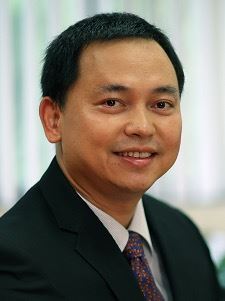 What is your current position and location? What is your current position and location?
I am currently the Director of the Protein and Proteomics Centre (PPC) at the National University of Singapore. I also serve as the corresponding principal investigator of the SingMass, Singapore National Laboratory for Mass Spectrometry, which is a consortium offering holistic solutions for mass spectrometry applications and technology advancement to Singapore research community and the broader industry. How did you get started in the field of proteomics? I was first introduced to mass spectrometry during my PhD studies at the University of Toronto, Canada, where my research focused on the structure and function of antifreeze proteins. Towards the conclusion of my PhD, I had the opportunity to learn mass spectrometry operations and utilized it to determine the molecular weights of antifreeze peptides and proteins. In 2001, while finalizing my PhD thesis, I followed my supervisor to the National University of Singapore and played a pivotal role in establishing the Protein and Proteomics Centre. Since then, my work has been primarily centered on proteomics projects.
What does being a member of HUPO mean to you? Joining the proteomics field when HUPO was in its nascent stages, I had the privilege of observing its evolution into the leading society in the domain. Being a HUPO member has enriched my experiences immensely. The annual congresses have been invaluable, not only in broadening my knowledge but also in fostering connections with numerous peers. These relationships and insights have significantly catalyzed my career growth.
What makes your research program exciting and unique?
The uniqueness of my research program stems from its multifaceted nature within a proteomics core facility. This setting has allowed me to engage with a myriad of projects and diverse samples - from microorganisms like viruses and bacteria to larger entities like plants and animals. This extensive exposure has enriched my experience immensely. My academic foundation in biochemistry and molecular biology has provided me a distinct advantage in experimental design, sample preparation, and data interpretation. Over two decades, I've harnessed qualitative and quantitative proteomics to tackle an array of biological questions. This encompasses everything from cancer biomarker studies to the intricate molecular mechanisms of autophagy and drug target identification. Beyond my research endeavors, I've been a linchpin in supporting and mentoring users at the PPC core facility. Notably, I've recently ventured into the integration of proteomics and mass spectrometry in food sciences, a focal research area in Singapore. This journey has me unveiling allergens in innovative food sources like plant-based meats and culture meats, and improving the shelf-life of leafy greens through strategic pre-harvest interventions. With plans to delve into aquaculture, focusing on nutrition, disease mitigation, and breeding, I remain confident that proteomics will be a game-changer in these pioneering fields. What are your interests outside the lab? Growing up on an island instilled in me a love for swimming from a young age. While I may not swim at a professional level, the tranquility I find in water has always been an effective stress reliever for me. I occasionally train with the staff swimming team and have even taken part in a few competitions. The camaraderie and team spirit during these events have always been a highlight. Apart from swimming, I enjoy biking with my son on weekends; it's not only a great way to unwind but also an effective calorie burner. Additionally, I practice Qi Gong, a traditional Chinese exercise, which I believe greatly benefits overall health.
Where do you envision the field of proteomics in the next 10 years? In the next decade, I anticipate significant evolution and growth in the field of proteomics. While advancements in highly sensitive mass spectrometers, specific binding partners for human proteins, single-cell technologies, and the integration of databases and artificial intelligence have catapulted human biomedical research to new heights, there's still a notable gap when it comes to proteomics applications in other organisms, particularly non-model organisms. As more researchers apply proteomic techniques across diverse biological disciplines, including intersecting fields like environmental biology, there's immense potential for groundbreaking discoveries. The next 10 years will likely witness a surge in insights and knowledge in these lesser-tapped domains, bridging the current disparity and truly harnessing the power of proteomics in its entirety. Connie Jimenez, The Netherlands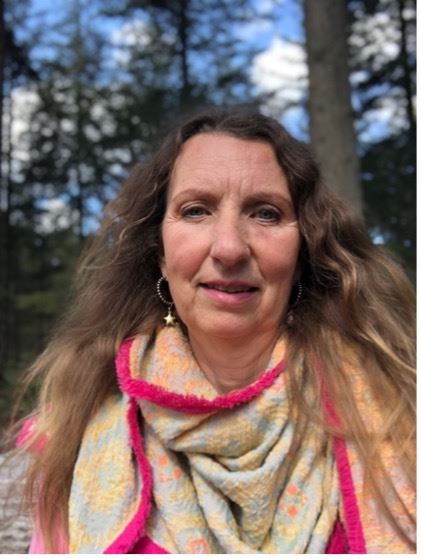 What is your current position and location? I am full Professor of Translational OncoProteomics, Principle Investigator of the OncoProteomics Laboratory and Director of the Proteomics Core Resource, all at Amsterdam University Medical Center, in the beautiful city Amsterdam where I was born, in The Netherlands. How did you get started in the field of proteomics? I fell in love with mass spectrometry early on in my scientific career, when I was as a PhD student in the field of neurobiology at the Vrije Universiteit in Amsterdam under the supervision of Dr. Ka Wan Li. Starting in 1992, I applied MALDI-TOF-MS to single dissected giant neurons of the snail brain to understand neuropeptide neurotransmission. This single cell profiling worked miraculously well, detecting by mass all the known neuropeptides and identified many more. It took 2 years to characterize them by Edman degradation and later-on when tandem MS of peptides became available. Today all sequencing could have been done in short time from a single cell! In the following years the field of “biological mass spectrometry” evolved into proteomics. My first steps into proteomics were in the laboratory of Prof. Al Burlingame at UCSF, San Francisco. After my post-doc in the US, I moved back to Amsterdam where in 2006, I was fortunate to get a start-up grant of the Cancer Center Amsterdam to found the OncoProteomics Laboratory (www.oncoproteomics.nl). What does being a member of HUPO mean to you? I am a team player by nature. I like to learn and be inspired by other people, to share best practices, to collaborate and perform studies that a single lab can not do. To stimulate exchange in The Netherlands, I founded the Netherlands Proteomics Platform in the early proteomics days in 2001. At the European level, I currently serve as elected Vice-President of the European Proteomics Association. The international HUPO conferences are an excellent way to make new connections and start new collaborations. As co-chair of the HUPO cancer project, I am very excited about the DIA-MS-based pan-cancer landscape of over a 1000 cancers that we generated with a few HUPO labs. What makes your research program exciting and unique? Clinical proteomics is our focus of interest. For large-scale profiling, we now apply data-independent acquisition mass spectrometry to study cancer tissues and clinical trial needle biopsies, urinary vesicles in cancer and cerebrospinal fluid in dementias, to name a few spear points. Being based at an academic medical hospital enables clinical collaboration and gives us access to unique clinical samples series and work on clinical needs. In the oncology context, where personalized treatment requires analysis of single samples, I am very excited about phosphoproteomics coupled to our Integrative Inferred Kinase Activity (INKA) single sample analysis approach that is a great tool to prioritize actionable kinases for (combination) kinase inhibitor treatment of cancer. What are your interests outside the lab? I am interested in bio-hacking, natural health and food as medicine. It is amazing what can be done with diet and lifestyle to feel fit and reverse chronic disease. In my free time, I love to listen to podcasts with experts in these areas. I also enjoy to simply sit in my little yard when the sun shines and watch my rabbits, spend time with my two, now grown-up, sons and husband, hang out with them going around the canals in our boat with some food and wine, or go discover new places on holidays that combine visits to cities and nature. Last but not least, being half Spanish, I also love to go to Spain, to discover new places in this amazing country and visit my father who now lives there. Walking the Camino de Santiago when I find the time, is on my bucket list. Where do you envision the field of proteomics in the next 10 years? In 10 years, I envision that mass spectrometry-based proteomics will have entered the clinic, where at least in some academic hospitals, clinicians are able to order a plasma, CSF or urinary (vesicle) proteome or a tumor phosphoproteome. So much insight can be gained from comprehensive protein profiles and/or targeted analysis of disease signatures. I will work hard to make this happen. Juan Antonio Vizcaino, United Kingdom
I am leading the Proteomics Team at the European Bioinformatics Institute (EMBL-EBI), which is located in Hinxton, south of Cambridge (UK). EMBL-EBI includes the largest collection worldwide of biological databases, including for instance UniProt, Ensembl and the Protein Data Bank (PDB), among many others. My team manages the PRIDE database of mass spectrometry proteomics data, and related tools and resources. How did you get started in the field of proteomics? Before working in bioinformatics, I did an experimental Ph.D. in fungal molecular biology (in Spain, my home country) and at that point I carried out a few mass spectrometry experiments on peptides with antibiotic properties. After my Ph.D. I moved to work in bioinformatics. After a brief first postdoc in computational genomics, I started a second postdoc at EMBL-EBI, supervised directly by Lennart Martens, at the time when the PRIDE database was starting to become popular. At that point, I got familiarised with computational proteomics topics and concepts. What does being a member of HUPO mean to you? My first direct contact with HUPO was in 2009, when I attended my first meeting of the HUPO Proteomics Standards Initiative (PSI) and my first World-HUPO Congress in Toronto. I have been lucky to attend all PSI and HUPO world-congresses since, with the only exception of the HUPO Congress in Sydney in 2010. Under the HUPO umbrella, I have had the great opportunity to interact with many people in the community, learning a lot in the process. This is what I really value the most about the organisation: it provides the means to build a very active community. What makes your research program exciting and unique? PRIDE is the most popular resource worldwide to store and access mass spectrometry proteomics datasets. Currently we get on average 515 submitted datasets per month (around 25 datasets per working day). People outside the team do not realise about the volume of work that the team has, just to keep things running smoothly on an everyday basis. Indeed, sharing data in the public domain has become a very popular thing to do and that is a very good thing! Our role is therefore quite central in the community and this means that we are lucky to have a lot of interactions with people from all over the world. In the last years, we are increasingly re-using the public data for different purposes, including some research projects. However, our overall goal is that it becomes more accessible and integrated with other biological data types in bioinformatics databases, aiming to reach people that are non-experts in proteomics. We are doing this in collaboration with other EMBL-EBI resources such as UniProt, Ensembl, PDB, Expression Atlas, etc. Since proteomics approaches are very diverse, we are really privileged of being able to work with many data resources and teams. Additionally, we are leading many activities in open science, including community efforts such as the PSI (devoted to the development of open data standards) and ProteomeXchange, the International Consortium of proteomics resources, among others. It is really rewarding to have such nice group of International collaborators! What are your interests outside the lab? I expend most of my free time with my friends and family, and sometimes that involves travelling to/from Spain. I have always loved going to the cinema and have been a bit of a geek about movie (and now also tv series) soundtracks. Also, I really like tennis. One of the things that I could finally do when moving to the UK was going to Wimbledon. Where do you envision the field of proteomics in the next 10 years? In my view, among the several parallel directions, I would like to see that proteomics techniques become much more used by the average biologist and clinician. This involves developments in different areas, but being able to handle large numbers of samples is clearly one of them. If we want to unleash the potential of the field, proteomics must be able to be applied to similar experimental set ups (e.g. in large cohorts) to what it is possible to do today using transcriptomics techniques. In bioinformatics, methods will continue to develop quite dynamically and artificial intelligence approaches (e.g. machine learning) will be used more and more for improving different aspects of the proteomics experimental workflow, including the data analysis. For that it will be key to have available and accessible large amounts of high-quality data in the public domain. Henry Rodriguez, USA
My current position is the Founding Director of the Office of Cancer Clinical Proteomics Research, in the Division of Cancer Treatment and Diagnosis at the National Cancer Institute, National Institutes of Health that is located just outside of Washington DC. Recently, I served as Assistant Director for Strategic Health and Cancer Science, in the Executive Office of the President at the White House. How did you get started in the field of proteomics? It was by a stroke of serendipity that I stumbled upon my current career path, as my academic background and professional training are rooted in the intricate realm of molecular and cell biology, along with DNA/RNA technologies (or genomics, as it is now widely referred to). While I was immersed in a fellowship program at a renowned cancer center in California, I was struck by a realization: despite the advances in targeted cancer treatments, most therapies still focused on targeting proteins. This realization led me to the opportunity of a lifetime when the National Cancer Institute (NCI) invited me to spearhead a proteomics initiative aimed at assessing the potential of proteomic technologies in the field of cancer biomedical research. The transition was a natural one for me, as we all know that the path of biology inevitably leads from DNA to RNA and ultimately to proteins, which are the building blocks of life itself. It was a momentous undertaking that allowed me to embrace the inherent complexity of the human body's intricate mechanisms and push the boundaries of scientific knowledge. Thus, I embarked on this exciting new journey, eager to explore the vast possibilities of proteomics [coupled with genomics] and contribute to the ongoing fight against cancer. What does being a member of HUPO mean to you? To be a participant of HUPO is to be part of a tightly-knit community, a family of colleagues united in their pursuit of a common goal: to unravel the mysteries of how proteins interact with human biology and, ultimately, uncover their role in human diseases. By collaborating with like-minded individuals, we are driven by a shared passion for improving patient care and outcomes through cutting-edge research and innovative discoveries. Collaborating with HUPO colleagues and other scientific organizations, we are part of a global movement that is making tremendous strides in the field of proteomics and paving the way for a brighter future in healthcare. What makes your research program exciting and unique? What makes my research program, CPTAC – a team-based program at the National Cancer Institute, National Institutes of Health, truly exceptional and captivating is the opportunity to witness firsthand the awe-inspiring work of some of the world's most brilliant scientific minds. These exceptional individuals, whom I consider as the Rock Stars of their field, are pushing the limits of scientific knowledge as we explore the novel ways in which proteomics [coupled with genomics – proteogenomics] can be utilized for clinical benefit. As I observe their groundbreaking discoveries and cutting-edge research, I am filled with a sense of admiration and wonder for the innovative strides they are making in advancing the field of proteomics. It is a privilege to work alongside such an accomplished and talented group of individuals, and I am continually inspired by the remarkable work that they do. What are your interests outside the lab? Looking beyond the well-worn walls of my office, I am delighted to discover a trove of captivating interests that offer a serene refuge from the hustle and bustle of my professional life. I revel in the simple pleasures of life, including basking in the warmth of my family's embrace, soaking up the salty sea breeze while unwinding on the golden sands of the beach, savoring the smoky and succulent flavors of a perfectly grilled barbecue, and concocting scrumptious pastries in the kitchen. Moreover, I find great fulfillment in lacing up my running shoes and hitting the pavement. Through these varied pursuits, I am able to attain a sense of equilibrium and balance in my life, allowing me to approach both my personal and professional endeavors with renewed vigor and passion. Where do you envision the field of proteomics in the next 10 years? As I look to the future of proteomics, I am filled with a sense of excitement and anticipation for the limitless potential it holds within the realm of clinical trials. With its ability to provide a better of the underlying mechanisms of a disease, proteomics stands to revolutionize the field of medicine by offering a more precise and individualized approach to patient care. I am eager to see the transformative impact that proteomics will have on the field of clinical trials and the broader landscape of healthcare. Eduard Sabidó, Spain
I am currently the head of the Proteomics Unit at the Centre for Genomic Regulation and the University Pompeu Fabra in Barcelona, Spain How did you get started in the field of proteomics? I got started in the field of proteomics during my PhD at the University of Barcelona. I was working in an organic chemistry laboratory synthesizing probes for activity-based proteomics to study neuropeptide-processing proteases. The probes were modified peptides inspired by the original neuropeptides that trapped the proteases of interest. We then used mass spectrometry proteomics to identify the enzymes involved in the generation of each family of neuropeptides. What does being a member of HUPO mean to you? Being a member of HUPO means being part of a vibrant community, passionate about proteomics, in which I can network, exchange ideas and results, get new research opportunities, and build new collaborative projects. What makes your research program exciting and unique? In recent years we have devoted a lot of effort to the development and implementation of targeted proteomics and data-independent acquisition methods. This has allowed us to apply these techniques to a multitude of projects, especially in the characterization of proteins in cerebrospinal fluid and plasma, but also in the confirmation of certain splicing variants and immunopeptides, or more recently, in the identification and quantification of desoxi- and ribonucleoside modifications. We also enjoy to develop automated quality control applications, such as QCloud, and the characterization of post-translational modifications in evolutionary contexts, whether they are phosphorylation or histone modifications. All in all, it is very exciting. What are your interests outside the lab? Beyond science I like to ride my bike and read good stories. I also enjoy fixing broken gadgets of all kinds because it's the perfect excuse to learn how things work and expand my knowledge. Where do you envision the field of proteomics in the next 10 years? I assume that in 10 years the artificial intelligence methods, which have already started to be relevant in proteomics, will be widely implemented in all the data acquisition and analysis processes. This will change how we acquire and interpret data, and it will allow us to generate richer datasets and extract much more information from the raw data than we do today. Rommel Mathias, Australia
I am a senior scientist working for the biotechnology company CSL, within the Research Organization. CSL Research employees are located at sites around the world including Australia, Germany, Switzerland and the USA, and I am based at the Bio21 Institute in Melbourne Australia. How did you get started in the field of proteomics? In my final year of undergraduate study, I was fortunate to have a 6-week placement in the laboratory of Prof. Richard Simpson, at the Ludwig Institute for Cancer Research. During that time, I was inspired by the cutting-edge capability of mass spectrometry, and the unlimited potential of proteomics to solve complex biological problems. The following year, I joined Prof. Simpson’s lab to complete an Honours research project, followed by PhD studies that used proteomics to examine the contribution of extracellular modulators to enhance cancer cell metastasis. What does being a member of HUPO mean to you? An opportunity to collaborate with brilliant scientists that are passionate about driving knowledge forward to benefit human health. The first HUPO meeting I attended was in 2009 in Toronto Canada. It was a pivotal meeting for me because I had just submitted my PhD thesis, and had the opportunity to present the findings at the conference. At that meeting, I was honoured to be awarded the HUPO Young Investigator Award, and in that very moment, I felt privileged to be a part of such a special community of like-minded scientists. Since then, I have really enjoyed catching up with colleagues from all over the world at international conferences. In particular, it was fantastic to reconnect again in-person last year at the Cancun meeting, and re-establish important connections and relationships. What makes your research program exciting and unique? In one of our first meetings, Prof. Simpson imparted some career-shaping advice. Rather than study a single protein in depth, he suggested that mastering expertise like mass spectrometry could open up many more opportunities in the future, as it could be applied to any biological problem. It was sound advice that I have since passed on to my students as well, and I have enjoyed working in diverse labs and biological focus areas around the world. In 2012, I received a prestigious CJ Martin Fellowship from the National Health and Medical Research Council (NHMRC) of Australia to undertake post-doctoral studies at Princeton University. In Prof. Ileana Cristea’s lab, I learned about the wonderful world of sirtuins, and herpesviruses including human cytomegalovirus (HCMV). Most significantly, applying an IP-MS method underpinned the discovery of SIRT4 as the first cellular lipoamidase (Mathias et al, Cell 2014). Upon returning to Australia, I established my own laboratory at Monash University, and using a variety of proteomic strategies, we explored the molecular mechanisms used by HCMV to assemble and release infectious virions. In 2020 I made the switch from academia to industry and joined the analytical biochemistry group in CSL headed by Dr. Matthias Pelzing. My research focus is within the cardiovascular and metabolic therapeutic area. I am able to harness the power of mass spectrometry to investigate various human biological samples, to gain insight into the mechanism of action of CSL’s therapeutics. With my findings impacting various clinical aspects of important assets under development, to me currently, discovery science has never been more exciting. So, I guess it’s clear that proteomics has been a significant cornerstone of my career, and a fantastic expertise thus far. The opportunity to integrate it within new and interesting biological problems, whether it be in an academic or industry setting, constantly reinvigorates my passion for research. What are your interests outside the lab? One of the reasons I love living in Melbourne is that the city always hosts sporting events throughout the year. I am an avid ‘footy’ fan, and spend most weekends during the season watching my beloved Hawthorn Hawks in the AFL (Australian Football League). Outside of the AFL season, I really look forward to attending the Australian Open, and F1 Grand Prix, as well as the horse-racing Spring Racing Carnival and the Melbourne Cup. Of course, these events are most fun when in the company of my family and friends. Where do you envision the field of proteomics in the next 10 years? Complex organ biology has always intrigued me because single infiltrating cell types can underpin pathological disease. As these cells are rare within the organ, this important information is often lost during bulk tissue analysis. So, I have been watching the development of single-cell proteomics with keen interest. As many inspiring efforts continue to drive this field forward, I am hopeful we will be able to establish the throughput and sensitivity required to accurately profile single cells in sufficient depth, toward the quantification of single molecules that will uncover novel drivers of disease. It has also been interesting to watch the emergence of non-mass spectrometry-based proteomic approaches, and it seems inevitable that many other new and innovative technologies will be developed in the coming years. However, I think it will be important to understand in depth the strengths and weaknesses of each approach. As to ultimately reach the true value, we will need to be able to interpret why certain methods are confirmatory versus opposing. Encouragingly, as the proteomics toolkit continues to mature with the release of new technologies, we will be further armed with a vast range of diverse yet synergistic approaches, to comprehensively tackle complex biological questions of interest. Albert Heck, Netherlands
Since 2017 I have been Distinguished Professor at the Science Faculty of Utrecht University in the Netherlands (www.hecklab.com). I started in Utrecht the Biomolecular Mass Spectrometry & Proteomics group in 1998, when just a few people knew how to spell the word proteomics, and we relied on 2D gels and peptide-mass-finger printing. How did you get started in the field of proteomics? I got trained in physical chemistry and started in the field of mass spectrometry through graduate research in the lab of Nico Nibbering at the University of Amsterdam. For a post-doc I went into laser spectroscopy and molecular beams, with David Chandler at Sandia and Dick Zare at Stanford. In 1995 I was attracted to Warwick University in the UK and started to work as a Lecturer on the analysis of peptides and proteins by mass spectrometry. In my job application for Utrecht in 1997 I did write down a big dream of what I believed mass spectrometry could deliver in the life sciences, and seemingly was able to convince the recruitment committee. We had to learn how to run gels, do nanoLC and manually interpret fragmentation spectra. And yes, all the dreams I put forward have come true, some even earlier than expected. What does being a member of HUPO mean to you? One of the greatest things of being in science is being part of this global family of scientific friends sharing interests. HUPO is a wonderful organization that supports you to connect to colleagues in the proteomics field. I had the pleasure to organize the HUPO meeting in 2008 in Amsterdam, which I consider still one of the highlights of my career. As scientists we can show the world how we can all connect and work together, young and old and of all ethnicities and nationalities. I consider HUPO as the organization of scientific friends in proteomics. What makes your research program exciting and unique?Originally in my lab we had two research lines; proteomics and native mass spectrometry. A great development has been that these programs have now come more together, through advances in for instance MS-based methods in structural biology such as cross-linking MS, and the movement in proteomics from peptide-centric to more protein-centric approaches. Another thing we hope to achieve is to do things others in the field do not yet do and show what mass spectrometry is capable off to the not yet converted. Now that is for instance single molecule mass spectrometry and antibody repertoire profiling (https://www.youtube.com/watch?v=Tnb0MdCF280). What are your interests outside of the lab? Where do you envision the field of proteomics in the next 10 years? Xiaobo Yu, China
I'm a principal investigator with the National Center for Protein Sciences-Beijing (PHOENIX Center) and the Beijing Proteome Research Center in Beijing, China. How did you get started in the field of proteomics? My proteomics research journey began in 2003, when I joined the laboratory of Prof. Danke Xu as a Ph.D. student. Under his guidance, I gained a solid foundation in protein microarrays and developed multiplex biomarker immunoassays for detecting hepatitis B disease. In 2008, I received the Alexander von Humboldt fellowship and moved to the NMI Natural and Medical Sciences Institute at the University of Tuebingen, where I had the privilege of working with Prof. Thomas Joos and Prof. Nicole Schneiderhan-Marra. During my time there, I received systematic training in assay development using Luminex technology, and I developed multiplexed immunoassays for inflammatory cytokines. Additionally, I wrote a review paper titled "Protein microarrays for personalized medicine" (Clin Chem. 2010 56(3):376-87.). I went to Phoenix, Arizona in 2010 when Prof. Joshua LaBaer founded the Virginia G. Piper Center for Personalized Diagnostics, Biodesign Institute, from the Harvard Institute of Proteomics. In Josh’s lab, I focused on developing high-density protein microarrays using Nucleic Acid Programmable Protein microarrays (NAPPA). This technology allowed me to study protein-protein interactions, post-translational modifications, and biomarker identification (Nat Protoc. 2015 10(5):756-67.). I am grateful to all my supervisors, colleagues, and friends for their unwavering support throughout my research and personal life. What does being a member of HUPO mean to you? Being a HUPO member entails more than just being a part of our global family; it also signifies a commitment to advance the rapid development of proteomics, particularly in the realm of precision medicine. By collaborating with individuals from diverse backgrounds and countries, we aim to achieve this goal. What makes your research program exciting and unique? Our focus lies in investigating the mechanics of human disease and discovering biomarkers for precision medicine by leveraging advanced high-throughput proteomics technology. To this end, we have developed a variety of protein microarrays, including those for Human, Tuberculosis, and SARS-CoV-2, as well as a comprehensive human autoantigen database available at http://biokb.ncpsb.org.cn/aagatlas/. Additionally, we have established a high-throughput translational proteomics platform for discovering, validating, and translating potential biomarkers into clinical applications. Through collaborations with clinical partners, we have successfully identified a dozen promising biomarkers for cancer, autoimmune diseases, and COVID-19, which hold the potential to greatly benefit patients soon. What are your interests outside of the lab? I enjoy traveling, communicating with people from different cultures, listening to music, trying different types of delicious dishes, and spending time with family. Where do you envision the field of proteomics in the next 10 years? Proteomics has experienced rapid growth in the last decade thanks to advancements in technology and applications. However, in the next 10 years, the development of proteomics technology with high throughput, high sensitivity, high robustness, and high automation will be critical to driving the field forward. This will require the development of diversified technologies depending on specific applications, as proteins are more complicated than genes in terms of their composition, folding, modifications, and functions. It is especially difficult to develop a one-size-fits-all approach like next-generation sequencing technology. It would therefore be necessary to develop diversified technologies depending on how proteomics are used in specific applications. For example, mass spectrometry technology can easily detect thousands of proteins in tissues and cells, but immunoproteomics analysis technology is more suitable for detecting proteins and autoantibodies in serum and plasma. Large science projects like the Human Protein Atlas, Clinical Proteomic Tumor Analysis Consortium (CPTAC), The Human Proteome Grand Project, and The Proteomic Navigator of the Human Body (π-HuB Project) will continue to be driving forces in proteomics and related fields. The π-HuB Project, for example, is an international effort to characterize the entire lifetime human proteome, rebuild a digitized human body navigation system, and create a new paradigm of Phronesis Medicine. Proteomics will have a significant impact on basic research, medicine, drug research and development, and other industries. Medicine, in particular, will be the first discipline to be changed by proteomics, as proteins play a crucial role in the transition from physiological to pathological states in the human lifecycle. For example, autoantibodies can be detected years before the clinical onset of diseases like systemic lupus erythematosus. Analytical platforms like mass spectrometry, protein microarrays, multiplexed immunoassays, and chemiluminescence are available to meet clinical application scenarios, and multiple markers and artificial intelligence can provide more accurate results, especially for diseases with high heterogeneity and multi-risk factors. However, the successful transfer of proteomic biomarkers into clinical practice requires close collaboration between scientists, government, venture capital, clinicians, and in vitro diagnostic (IVD) companies. Theodora Katsila, Greece
I serve as an Assistant Professor and Head of the Biomarker Discovery-Translational Research laboratory at the Institute of Chemical Biology, National Hellenic Research Foundation, Athens, Greece. How did you get started in the field of proteomics? This has been love at first sight and ever since. It took place during my placement year at MSD UK when being an Imperial College London undergraduate. At the Drug Metabolism and Pharmacokinetics department, I felt ecstatic when involved in LC-MSn method development, optimization and application for a series of proteoforms. From mass spectrometry-based proteomics to multi-omics, I have been hunting brain teasers all along during postgraduate studies and career choices either in academia or industry. What does being a member of HUPO mean to you? If I may, HUPO is my gang. HUPO fulfils my need of belonging. Beyond space and time, really, HUPO is an organization that is dedicated and serves a lively community that share proteomics as a driving force to serve science and society. What makes your research program exciting and unique? When it comes to translational biomarkers, our motto is to translate information growth to knowledge growth. Within the chemical biology space, we aim to catalyse the transition from serendipity-driven to data-driven precision medicine. This is a paradigm shift that comes with a need for biomarker-guided trial design and patient-centric companion diagnostics. For this, we apply a. mass spectrometry-based multi-omics and exosomal profiling, b. 3D cell models and cheminformatics, c. ADME-Tox in 3D, and d. machine learning, deep learning and computational statistics to disrupt healthcare solutions and empower biomedical innovation. What are your interests outside the lab? Art and nature. As a former ballerina, I miss no classical ballet event. Art galleries are my second best. Hiking is my alternative way to appreciate beauty. When cannot escape Athens, a pilates session is a must. Where do you envision the field of proteomics in the next 10 years? A vision or a wish list, it is hard to say. I feel we already experience great times. I crave for wet- and dry-lab pipelines with a particular interest in the integration of pixels and spectra. Such an outcome should not be a leap of faith but rather the outcome of ongoing synergies for assessing bias, standardization, and open science. Benjamin Garcia, USA
In the summer of 2021, I became the Raymond H. Wittcoff Distinguished Professor and Head of the Department of Biochemistry and Molecular Biophysics at the Washington University School of Medicine in St. Louis, MO, USA. Before this, I was a Professor at the University of Pennsylvania School of Medicine (2012-2021) and before that at Princeton University (2008-2012). Yeah, I move a lot. How did you get started in the field of proteomics? Well, I got started in the field of mass spectrometry through undergraduate research in the lab of Carlito Lebrilla at UC Davis, and he introduced me to Jack Beauchamp (Caltech) at the Lake Arrowhead Ion Conference. Later I spent one summer at Caltech with Jack as a summer undergrad researcher. I mentioned to him that I wanted to go to graduate school to learn more about all the proteins our genome encodes (the Human Genome was being sequenced) and Jack said, “Oh, you want to do proteomics? Then you should go to graduate school with Don Hunt (University of Virginia),” so I did. The rest I guess is history. What does being a member of HUPO mean to you? HUPO is a wonderful organization truly devoted to all of its members and the proteomics field. Being able to serve on the Executive Committee these last couple of years has showed me how much hard work everyone behind the scenes takes on to make sure all of its members are heard, represented and supported. I am very proud to be a part of the HUPO community. What makes your research program exciting and unique? My lab is focused on development and application of mass spectrometry based approaches for characterizing protein post-translational modifications (PTMs), especially on epigenetic histone proteins. We have developed several platforms for detecting novel modifications, and also for characterizing combinations of modifications that co-occur on the histone tails. These days we are focusing more to understand human diseases with epigenetic alterations (sarcoma and a neurological developmental disorder), where there are mutations to the histones that affect global epigenome PTM patterns that drive this pathogenesis. We are also excited with new work focusing on utilizing mass spectrometry to sequence RNA to identify novel post-transcriptional modifications. Oops, I guess that is not proteomics, but its still cool. What are your interests outside of the lab? I am a Department Head, so I enjoy that administrative responsibility to do all I can to enhance and improve the research, education and training of all the students, postdocs, staff and faculty. I have also been active to promote diversity and inclusion at all the institutions and societies I have been a part of, as academia needs change. Younger scientists need the more established scientists to lead the way, train them and then hand over the torch, so I enjoy being involved with any ECR activities as well. I have 4 kids, so personal time has always revolved around all of their interests in sports, drama, music, etc., never a dull moment at home. I’ve also been known to tweet a bit, so you can probably catch me on Twitter alternating between trying to give serious advice to aspiring scientists, to posting ridiculous GIFs, go #TeamMassSpec! Where do you envision the field of proteomics in the next 10 years? I like the initial work being accomplished in spatial and single cell proteomics. I would not be surprised in the future for the field to further develop the approaches to be able to sample proteomes of thousands of single cells spatially in tissues. I also truly believe we must evaluate all of the proteoforms of a protein in order to be able to get the most accurate picture of protein function in the cell. I would love to see Top Down approaches becoming as easy to perform as Bottom Up proteomics, to the point that someday everyone only decides to perform Top Down proteomics. There you go, Top Down proteomics to characterize the proteoform repertoires of entire proteomes of single cells spatially located in tissues. I can dream can’t I? Aparna Srinivasan, Canada
I just finished defending my master’s thesis in the labs of Dr. Hannes Rost and Dr. Anne-Claude Gingras at the University of Toronto! How did you get started in the field of proteomics? I discovered proteomics during my rotation in Dr. Rost and Dr. Gingras’ labs when I started graduate school. It was my first introduction to the application of mass spectrometry in a biological context. I especially loved learning about all the data analysis challenges that come mass spec based proteomics. What does being a member of HUPO mean to you? Being part of the HUPO community is such an amazing way to learn about all the different applications of proteomics. I haven’t been able to attend a HUPO conference in person yet, but I look forward to an opportunity in the future! What makes your research program exciting and unique? Both the labs that I was part of during my master’s degree do a lot of exciting work around method development for data independent acquisition based mass spectrometry and application of innovative techniques such as Bio-ID to biological systems. My thesis in particular focused on whether trapped ion mobility can be used to differentiate between isomeric phosphopeptides – that is, peptides with identical sequences that are phosphorylated at different positions. Mass spectrometry is such a great method of understanding how signaling works through phosphorylation at a systems level. I think developing methods to improve the identification and quantification of individual phosphorylation sites is a really crucial part of progressing from cataloguing phosphorylation sites, to understanding their biological significance. What are your interests outside of the lab? Outside of lab I enjoy exploring new places in Toronto with friends, and to read as often as I can! Where do you envision the field of proteomics in the next 10 years? In ten years, I hope top-down proteomics of complex mixtures, especially for modified proteins, will be as routine and well established as that of shotgun proteomics. Characterizing proteoforms from cell lysates would be such a unique and powerful insight into cellular signaling! Jing Yang, China
I have been a Principal Investigator at the National Center for Protein Sciences • Beijing (PHOENIX Center) since 2015. How did you get started in the field of proteomics? My PhD work is focused on elucidating the metabolic pathway of gambogic acid (GA) which mainly involves the Michael addition reaction of the intestinal sulfite to an α,β-unsaturated ketone moiety on this natural product (Yang J, et al., Drug Metab Dispos, 2011). Meanwhile, I reasoned that this naturally occurring electrophile might also covalently react with nucleophilic residues on proteins. This hypothesis was validated by mapping GA-adduced cysteine sites on a selected group of proteins, like thioredoxins (Yang J, et al., J Nat Prod, 2012). Finding more GA target proteins is therefore to be a natural extension, which requires an omic approach. Then I joined the Liebler lab at Vanderbilt University in 2012, where I first learned state-of-the-art mass spectrometry-based proteomics. After ~ 3 years of postdoc training, I had my own lab and my first project was to get my ‘unfinished work done’ (i.e., chemoproteomic identification of GA targets) (Tian C, et al., Cell Chem Biol, 2017). What does being a member of HUPO mean to you? For a long time, I considered myself as a ‘redox guy’ rather than a ‘proteomics person’. I decided to join HUPO very recently in 2022. As a new member to HUPO, I love being part of this international community as it integrates scientists from diverse research backgrounds all over the world and provides versatile opportunities for networking and career development. What makes your research program exciting and unique? My research group (www.yangresearchlab.com) is interested in advancing chemical proteomic technologies to answer fundamental questions in redox biology and to explore the “druggable” space of the cysteine redox proteome. An overarching goal is to understand the chemistry and molecular mechanisms of cysteine-mediated cellular regulation and signal transduction, with particular emphasis on the role of cysteine redox transformation, a ubiquitous and conserved mechanism for controlling protein function. We have developed many chemical proteomic methods to globally and site-specifically profile distinct types of cysteine redox forms. Our studies not only greatly expand the landscape of the cysteine redoxome in biological systems, but also provides a great opportunity to study cysteine-mediated redox networks in a range of biological processes and adaptive responses in physiology and pathophysiology. Projecting forward, the ultimate goal of my research is to accelerate the discovery of key regulatory nodes of redox signaling networks, profile changes in functionally important cysteines associated with disease, and harness this information for the development of new therapeutic strategies. What are your interests outside of the lab? As a Foodie, no pun intended, I love to do food tourism all around the world. Trying new delicacies that are specific to the region/country I’m visiting is my favorite part about travelling, allowing me to get a real flavor for what it’s like to live there. Also, food and culture are uniquely intertwined with one another. Various ingredients, dishes and seasonings are passed down through food which allows me to get better understanding of the history and traditions of a country. Where do you envision the field of proteomics in the next 10 years? Our expanding chemical proteomic toolbox not only provide a means to understand the functions and dynamics of proteins and their interactions in native biological systems, but also enables the discovery of new proteoforms. This trend that I believe will continue to advance our understanding of the human proteome. Moreover, I envision that chemical approaches will fuel the technological innovations in MS-independent proteomics, which will literally be a game changer in the next decade. Vera Ignjatovic, USA
In August 2022 I made a big move from Australia to the US to start a new position as the Inaugural Assistant Director for Translational Research at the Johns Hopkins All Children’s Hospital (JHACH) Institute for Clinical and Translational Research (ICTR) and Professor of Pediatrics PAR in the Johns Hopkins University School of Medicine. The location is tropical St. Petersburg, Florida, in very close proximity to some of the best beaches in the US – St. Pete beach and Clearwater being most well-known. How did you get started in the field of proteomics? Proteomics was introduced to me by chance. It was one of those discussions where I was outlining the difficulties of working in the pediatric research space, particularly limitations related to the blood volume available for laboratory studies. This is something rarely mentioned in the adult research space. My colleague suggested that I look into proteomics, and, I never looked back. What does being a member of HUPO mean to you? HUPO represents a community of like-minded, friendly, giving and caring people with proteomics as a common passion. HUPO provides a home for individuals from all corners of the globe with a wide spectrum of qualifications and career stages, and provides an avenue for connection, learning and progress. It is a one-stop-shop for anyone who wants to learn the basics of proteomics, to those individuals that wish to work with complex aspects of proteomics such as instrument and/or software innovation. What makes your research program exciting and unique? For the past 22 years I my research has focused on three main topics:
The excitement for my research relates to the fact that it directly contributes to improving the outcomes for children, whether they are in the community and require a blood test, or in the hospital undergoing most complex clinical care. I am excited to have worked in multi-disciplinary and multi-national teams that include laboratory researchers, clinician researchers and clinicians across more than 13 different specialties, as well as industry and start-ups. The uniqueness comes from the fact that there are not many researchers globally who are focused on understanding how children are different to adults and the impact that those differences have on the way in which we look after our children, whether from the basic blood test perspective, or from the perspective of preventing and treating adverse outcomes such as thrombosis. In my new position I will focus on the strategic growth of translational research and interdisciplinary scientific collaborations. I will bring together laboratory-based scientists and clinical investigators to advance pediatric biomarker discovery and application, and will mentor the next generation of pediatric translational researchers. Proteomics will play an important role in this strategy. What are your interests outside of the lab? My interests outside of the lab are focused on continued learning and on health and well-being. To that end, I have completed an Executive MBA, and spend as much time as possible exercising, reading and visiting art galleries. When it comes to books, I am a traditionalist and can’t read a book unless it is hard copy, and unless I can experience the smell of the pages. Where do you envision the field of proteomics in the next 10 years? The sky is the limit for proteomics! Using the blue ocean strategic approach, and moving the boundaries, I see proteomics being used for point of care testing in a variety of community and clinical settings (e.g. concussion, dementia, drug adherence) – such that the mass spectrometry approaches truly become point of care and completely integrated into our daily lives. In the clinical setting I see proteomics being the basis of the fingerpick test done in the emergency department (ED) by the triage nurse to determine the course of action for every presentation to the ED. This is just the start – and I truly hope that the proteomics community sees the possibilities for proteomics outside of the currently specified boundaries, with innovative thinking, multidisciplinary approaches that include diverse perspectives including those of the community and patient advocacy and support groups. Tiannan Guo, Hangzhou ChinaWhat is your current position and location? I am a Principal Investigator and Associate Professor at Proteomic Big Data Lab of School of Life Sciences at Westlake University, located in Hangzhou, China. I am also the Director of iMarker Lab at Westlake Laboratory for Life Science and Biomedicine, and an associate faculty member of Center for Infectious Disease Research and Research Center for Industries of the Future at Westlake University. How did you get started in the field of proteomics? Actually, I was intent on becoming a clinician before delving into academic research. Everything changed in 2006 when protein systems first fascinated me when I learned about Gleevec, a drug directed at the BCR-ABL fusion protein for chronic myeloid leukemia. Invention of this drug enabled about 99% of the patients to be cured, turning a previously fatal diagnosis into a chronic disease. I thought then it would be useful to find more drug targets for more types of cancer, which would require understanding the abnormal proteins associated with each disease. My keen interest in proteins and protein systems took me to Singapore for doctoral studies in cancer proteomics at Nanyang Technological University and National Cancer Centre Singapore. After that, I joined the team of Prof. Ruedi Aebersold at ETH Zurich for my postdoctoral research. What does being a member of HUPO mean to you? Birds of a feather flock together. Being a HUPO member since my PhD studies has gratified me with a sense of belonging in a scientific and intellectual community that is the most authoritative and influential organization in the world for human proteome research. We can interact with erudite experts and scientists from diverse backgrounds and cultures. This kind of mingling and mutual learning is highly conducive to all the members and I do enjoy every minute of it. Being an active member of HUPO myself, I joined its Marketing and Outreach Committee (MOC) and was honored to be elected as Chair of the Education and Training Committee (ETC). Probably the most impressive experience in HUPO is that occasionally I need to get up at 5 a.m. to attend meetings with colleagues all over the world. We launched the HUPO account in WeChat, a hugely popular social media platform in China, whose 100+ original or translated articles have attracted nearly 1,300 followers. The training courses we organized had a record of over 2,000 concurrent attendees. I am really glad I can help promote HUPO and proteomics in the most populous country in the world. What makes your research program exciting and unique? My field of study, known as proteomic big data, focuses on the intersection between life science and artificial intelligence. We developed the pressure-cycling technology coupled with DIA mass spectrometry for effective proteomic analysis of biopsy tissue specimens. With this technology we can analyze many tissue samples in a relatively short period of time and generate large datasets to help decipher the complex dynamics of protein networks. We collaborate with clinicians and help them make more exact diagnoses and search for new drug targets. Currently we focus on precision diagnosis of thyroid cancers. There’s a grey area of about 30% of thyroid nodules, where no noninvasive screening exists to accurately determine if there’s cancer, leaving surgical removal of the thyroid gland and subsequent analysis the only option for certainty. Millions of individuals have their thyroid cut out because clinicians cannot tell whether it's malignant or benign. The thyroid secretes hormones vital for human health and life. Losing this organ will force patients into a lifelong regimen of taking artificial hormones, greatly affecting quality of life. So, our goal is to develop a more precise test. Over the past five years, we have identified a shortlist of proteins out of thousands and built a machine learning model for thyroid nodule diagnosis. It has shown about 90% accuracy in the lab in diagnosing thyroid nodules and will undergo further validation in a prospective clinical trial. Hopefully one day, when a patient has thyroid nodule(s), we can offer a new test and give her or him a better and more precise diagnosis. What are your interests outside of the lab? I am a huge fan of music. When I walk into my office every day, the very first thing is to turn on the stereo linked to my cellphone and play the music. It is always so nice to start a day with the music I like. Music entertains, enlightens, purifies, and always inspires me. I am also a voracious reader of not only academic publications in my field, but also a wide array of books. My office is inundated with books and I encourage my students and colleagues to become bookworms as well. It is true that reading serves for delight, for a well-rounded or well-developed personality, and for an expanded world view. Where do you envision the field of proteomics in the next 10 years? I think of proteomics just like a fast-growing adolescent who will inevitably encounter some growing pains, but I believe it has great potential for very brilliant prospects. The cost of measuring one protein using mass spectrometry (MS) has plummeted from around 3 USD in 2006 to roughly 0.1 USD in 2020, greatly enhancing the affordability of proteomics. In the next ten years, I confidently anticipate the routine diagnosis of many diseases will be dependent on biomarkers discovered by MS-based proteomics, and perhaps drugs discovered using proteomics will be adopted for clinical therapy. Besides, AI-empowered big data technologies are a powerful game changer in many fields but not yet in proteomics. In the next ten years, I think proteomic big data will be of comparable volume to other big data such as texts, photos, and videos. Accumulation of proteomic big data will open a new window for us to understand what’s happening in the micro-world of life activities. Ruth Hüttenhain, USAWhat is your current position and location? I am an Assistant Adjunct Professor at the University of Californian in San Francisco (UCSF) in the Department of Cellular and Molecular Pharmacology. How did you get started in the field of proteomics? In 2005 as part of my masters degree, I performed a research project at National Institute of Health under the supervision of Dr. Sonja Hess, for which I characterized hemoglobin variants using a combination of top down and bottom up proteomics approaches. This experience was transforming for me in many ways. Given my prior training in pharmaceutical sciences I had mainly worked on small molecules and became fascinated by the power and versatility of mass spectrometry to study proteins. It also was the first time that I was exposed to the international scientific community and opened my eyes about possible exciting career trajectories. As a result I decided instead of following my occupation as pharmacist to pursue a career in science and to learn more about mass spectrometry-based proteomics, which I have continued doing since then. What does being a member of HUPO mean to you? I love being part of HUPO because it integrates diverse scientists from all over the world that share their passion for proteomics technology development and its application to basic biological and clinical questions. Noticing how integral being part of this international community was in the early stages of my career and in fact still today, I decided to join the Early Career Researcher Initiative of HUPO with the goal to foster and grow an international community of young proteomics researchers that provides networking and career development opportunities and promotes diversity, equity and inclusion within the field of proteomics. What makes your research program exciting and unique? In my group, we study mechanisms of intracellular signal integration, currently with a focus on G protein coupled receptors (GPCRs). We develop and apply quantitative proteomic approaches to delineate GPCR interaction and signaling networks, their spatial organization within the cell, and their dynamic adaptations to diverse ligands. Ultimately, we hope that this knowledge will not only translate to a better understanding of GPCR signaling, but might provide a solid foundation for the design and testing of novel therapeutics targeting GPCRs with higher specificity and efficacy by monitoring their effects on a whole signaling network. What are your interests outside of the lab? Outside the lab, I love spending as much time as possible with my son. I like to explore the outdoors either by hiking, climbing, biking or running. Throughout my career these activities have always been the best way to find a balance during stressful times at work. Additionally, I like to travel around the globe to immerse in different cultures, explore new food and discover novel places. Where do you envision the field of proteomics in the next 10 years? This is not an easy question to answer, since I envision developments in many directions. I hope that proteomics will become more user friendly in terms of instrument operation and computational tools to analyze and interpret complex proteomic datasets, enabling its application in the wider scientific community. I believe there will be a continued improvement in the sensitivity of instrumentation and development of novel acquisition principles to a level that allows reliable quantification of thousands of proteins and PTMs extracted from single cells. However, over the last years also alternative technologies to mass spectrometry have started to emerge for measuring proteins. I believe that this is only the beginning and we will see more of these exciting developments in the next decade. Christian Moritz, France
My contract says “Research Engineer” and I am working for the University Hospital of Saint-Étienne and the Universities of Saint-Étienne and Lyon in France. How did you get started in the field of proteomics? Around 15 years ago, during my final years studying biology in Kaiserslautern, Germany, I got a student assistant job in a neuroscience lab. I was part of a proteomics project for which I was applying 2D gel electrophoresis and MALDI MS to study the auditory brainstem. I continued to do similar projects for my master and PhD thesis later on. What does being a member of HUPO mean to you? It means being connected with the proteomics community, although I am not working in a classical proteomics group. Interaction with other scientists is extremely important for science. Especially the work for the HUPO Early Career Initiative means to me 1) networking with other proteomics scientists, 2) getting into touch with the “celebrities” of our community, and 3) contributing to proteomics events. What makes your research program exciting and unique? We found biomarkers that are used by clinicians! A rare but exciting success of proteomics. Sometimes I feel that the autoantibody-related field of proteomics offers what we all are searching for: the translation from basic research to clinical application. Our research program is exciting and unique as it addresses an underrepresented but emerging subdomain of clinical proteomics. I am convinced that the surprisingly large repertoire of autoantibody-targeted antigens in humans (what I call the “autoantigenome” and which is an important part of the proteome) can help understanding disease states. What are your interests outside of the lab? I love being in nature with my bike. To me, holidays by bike are perfect to slow down life, because it does not exceed the speed that our brain is adapted to. Where do you envision the field of proteomics in the next 10 years? I hope that proteomics is getting closer to clinics. My vision is to use a drop of blood, some proteomics techniques and a machine learning algorithm that assists the clinicians in their decisions. But that’s rather for the next 30 instead of 10 years ;) Feel free to get into touch via LinkedIn or to follow me on Twitter. Lydie Lane, Switzerland
I am associate group leader at the SIB Swiss Institute of Bioinformatics and scientific collaborator at the faculty of medicine of the University of Geneva (Switzerland). How did you get started in the field of proteomics? In 2004, I was hired as a curator for the Swiss-Prot group, and my main task was to extract PTM information from research papers. At this time, phosphoproteomics and glycoproteomics were emerging technologies and important large scale PTM datasets started to be published. As these datasets tended to be noisy, I worked with data providers in order to better understand the technologies and set criteria to select the most relevant data for integration. Together with Alain Gateau, we developed the first pipeline to automatically annotate PTMs from such large-scale datasets. What does being a member of HUPO mean to you? In 2011, we launched the neXtProt database (www.nextprot.org) at the SIB Swiss Institute of Bioinformatics in order to fill the gaps in the annotation of the human proteome. Applying proteomics technologies to human proteins sounded as a very promising approach to attain this goal, so it has been quite natural for me to join HUPO. It has been very exciting to take part in my first HUPO meeting in Geneva and meet all the HUPO people there! neXtProt soon became the companion database for HPP projects, and all along these years the neXtProt team has been collecting the needs of the HUPO community and trying to answer them by developing specific tools (https://www.tandfonline.com/doi/full/10.1080/14789450.2020.1733418). I have been an active member of various boards within HUPO/HPP and participated in nearly all HUPO and HPP events since 2011– a fantastic journey in a strongly dedicated and fun community! What makes your research program exciting and unique? With its specific focus on human proteins, the neXtProt database is more comprehensive in human protein annotation than generalist databases. In addition, neXtProt has a powerful querying system based on semantic technologies that allows users to look for data not only in neXtProt but also in all semantically compatible life science resources; this enables very complex biological questions to be addressed. The neXtProt platform hosts tools specifically designed for proteomics labs such as the peptide uniqueness checker, as well as third-party tools from the HUPO community. Recently, we launched new function prediction pages for the ~1500 human proteins that still lack functional annotation and are inviting HUPO researchers to share their functional predictions to accelerate their characterization. See more information here. What are your interests outside of the lab? Outside of the lab, I am a professional music production manager (classical and contemporary music). I also play the cello in various amateur chamber music ensembles. Where do you envision the field of proteomics in the next 10 years? Quantitative proteomics, PTM profiling and multi-omics technologies have become quite mature in research settings and have proven to deliver important and complementary information compared to genetic tools. One can expect that these powerful technologies will be more extensively used in clinical applications - especially in the cancer field. This will certainly be quite challenging in terms of procedure standardization. In parallel, protein databases will have to adapt to personalized medicine needs and switch from the concept of a single static human proteome to that of individualized and dynamic human proteomes. Giuseppe Palmisano, BrazilWhat is your current position and location? I am currently Associate Professor at the Department of Parasitology, Institute of Biomedical Sciences, University of São Paulo, Brazil and at the Faculty of Natural Sciences, Macquarie University, Australia. How did you get started in the field of proteomics? During my Ph.D., I focused on understanding the phosphorylation of the mitochondrial complex I. My supervisor, Prof. Sergio Papa, an expert in mitochondria biology at the University of Bari (Italy) suggested the use of mass spectrometry as a tool to characterize the phosphorylation of specific subunits of complex I. At that time, I had no idea how to do it until I met my mentor Prof. Martin R. Larsen, an expert in PTMs analysis, who kindly hosted me in the Protein research group in Odense (Denmark), in a vibrant and inspiring atmosphere. That was my first “date” with Proteomics and since then, I never left. What does being a member of HUPO mean to you? Since 2010, my first HUPO conference, I have felt part of a community with a shared passion for proteomics, from method development to biological and clinical applications. Being a HUPO member means integration between researchers from diverse areas working in different locations worldwide. HUPO is also a community that continuously fosters the development of young researchers through many initiatives, such as the ECR. What makes your research program exciting and unique? In my laboratory, we aim at understanding how a pathogen interacts with vertebrate and invertebrate hosts. We focus on viruses and parasites causing (re)emerging diseases affecting people with poor access to infrastructures. My students and I are very excited to discover the language of this interaction using proteomics and other tools. We think there are unique opportunities to identify biomarkers and therapeutic targets for infectious diseases by looking at these biomolecules. What are your interests outside of the lab? I enjoy playing music. I am a saxophonist with a passion for jazz, bossa nova, nuevo tango and Italian opera. I can listen for hours to Charlie Parker, Tom Jobim, Astor Piazzolla and Giacomo Puccini’s music. Where do you envision the field of proteomics in the next 10 years? In the next ten years, I think that proteomics technologies, MS and beyond, will be more robust, easily accessible, and clinically approved. Seeing more biomarkers approved after proteomics studies will be an achievement with a profound benefit for public health. Moreover, I expect to see proteomics and other omics sciences part of more undergraduate courses to stimulate the interest of young generations. Sanjeeva Srivastava, India
What is your current position and location? Hi, I am Sanjeeva Srivastava, a professor at the Department of Biosciences and Bioengineering, Indian Institute of Technology Bombay, Mumbai, India. IIT Bombay is ranked an Institute of Eminence and number 1 rank in India. How did you get started in the field of proteomics? I got into proteomics because I wanted to learn more about life's deepest secrets. The human genome study was getting accomplished just at the beginning of my research career. What surprised me was the genome's remarkably stable nature! There was little difference between the genomes of humans and chimpanzees and much less between individuals. Nonetheless, we see how unique each individual is. I realized that the mysteries of life's variety are embedded in the continually evolving proteome. It's no surprise that I was drawn to proteomics and decided to pursue it as research for my Ph.D. My first brush with proteomics research started during my Ph.D. studies at the University of Alberta (discovery proteomics using 2DE and MS), and later I gained deeper insights during my post-doctoral years with Prof. Joshua LaBaer at Harvard Medical School (functional proteomics using protein microarrays-NAPPA and Surface Plasmon Resonance). What does being a member of HUPO mean to you? To me, HUPO has been instrumental in bringing together this thriving community of scientists with a shared enthusiasm for pushing the envelope of technologies and ideas, and it's an extraordinary feeling to be a part of this development. Most importantly, HUPO helped me embrace the diversity and engaged in scientific cooperation sans borders which are critical components for a scientist to keep innovating and be forward-thinking, both on and off the bench. What makes your research program exciting and unique? My research program's USP is willing to engage with real-world issues and understand the problem from a multi-omics perspective. I collaborate with a team of healthcare professionals on the proverbial "burning clinical problems" that our society faces. In our country, infectious disease is a significant problem. To uncover the biomarker candidates for diagnosis and prognosis, as well as the pathways involved for COVID-19, malaria, and dengue pathogenesis, I applied my multi-omics research expertise, mass spec, protein arrays and unique artificial intelligence-driven solutions. During the previous year, I significantly improved our understanding of the severity of COVID-19 in the Indian community. I used a multi-omics approach to unravel the biomarkers and pathways required for the prognostication and distinction of falciparum and vivax malaria from other febrile diseases. I discovered that the metabolite signatures of individuals with malaria and dengue fever may be used to distinguish between the two febrile infectious illnesses. Using metabolome analysis of infected patient sera, I was able to identify important regulatory mechanisms in severe vivax.In addition, I have made significant contributions to cancer proteomics in India. I'm using Artificial Neural Networking to find the most influential protein candidates that might help cancer patients be differentiated. In additional to our ongoing programs on brain tumors, as a part of ICPC, we are now currently engaged in few projects related to breast, cervical and oral cancer proteogenomics projects. What are your interests outside of the lab? I have been very passionate about teaching since the very beginning. Outside of research, I carry on this passion. Teaching becomes a part of my job; however, my true love lies in popularising and demystifying the world of proteomics to resource limited students. India being a diverse country, not all people get access to information as specialized as proteomics. However, with the rapid growth of internet connectivity, I could connect to learners from all around the country. I conduct small training programs for school & college students to experience faculties to help them learn and adopt the new proteomics technologies. Further, I am passionate about proteomics education and outreach using documentary and videos which could be understood by the large audience with audio-visual aids. Where do you envision the field of proteomics in the next 10 years? I anticipate a lot of changes, actually! What history has taught us, we would be doing something very different 10 years hence than what we are doing now. Remember, we primarily used to do gel-based proteomics a decade ago, and the field has changed a lot ever since. Broadly I hope the field is democratized with more labs joining forces, and proteomics no longer remains the fiefdom of a select few. I hope for more and more open-source, user-friendly computational analysis tools within the proteomics community, something like Skyline and MaxQuant. We also need better community-wide data validation methods that are so essential for the science of proteomics to get wider acceptance. Instrumentation wise I see a lot happening in the data collecting field that might ultimately lead to the standardizing experimentation workflows across labs, making data platforms less and less platform-agnostic, allowing proteomics to become as widespread and robust as genomics. However, one challenge that we need to work on is the development of emerging fields like single-cell proteomics and metaproteomics. We need to keep building bridges that would allow for proper integration of genomics, proteomics, and metabolomics datasets for easy and reproducible multi-omics research. Finally, I do see a very promising next decade for the proteomics and multi-omics field. Maria Robles, Germany
Website: https://www.imp.med.uni-muenchen.de/research-groups/robles/index.html What is your current position and location? I am a tenure-track professor at the Ludwig-Maximilians-University, Munich. How did you get started in the field of proteomics? After a postdoc in chronobiology in the lab of Charles Weitz at HMS Boston, I moved to Munich to work with Matthias Mann at the MPIB. I wanted to learn mass spectrometry-based quantitative proteomics and combine it with my interest in circadian biology. At that time, while it was well established that, in cells and tissues, circadian clocks drive rhythms of gene expression, daily dynamics of protein and/or post-translation modification abundance were largely undocumented. What does being a member of HUPO mean to you? Being a HUPO member allows me to keep in contact with the proteomics community, get to know new methods, approaches and having an overview of the general direction in which the field moves. What makes your research program exciting and unique? My group is applying mass spectrometry-based quantitative proteomics to answer different questions in the circadian field. For example, we are studying, downstream of transcription, daily dynamics of protein and post-translational modifications shape the temporal compartmentalization of cellular and physiological processes. We are trying to understand how temporal control of protein abundance/function is at the core of rhythmic biological pathways in healthy stage but also how pathological conditions, such as cancer and sleep deprivation, impact protein dynamics and thus circadian fitness. In addition, we are combining temporal and spatial proteomics to investigate rhythms in whole cells/tissue but also in subcellular organelles. What are your interests outside of the lab? I dedicate most of the “little” free time I have outside the lab to my children, doing small trips during the weekends and traveling too long distance during our vacations. Where do you envision the field of proteomics in the next 10 years? I think the main two areas of proteomics that will greatly advance in the next years, that are already taking over now, are single cell and clinical proteomics. Brian Searle, USA
Website: http://www.searlelab.org/ What is your current position and location? I am currently an Assistant Professor in the Department of Biomedical Informatics at The Ohio State University in Columbus, Ohio, and a member of the Pelotonia Institute for Immuno-Oncology (PIIO). How did you get started in the field of proteomics? After undergrad, in 2001 I started as a Research Assistant at the Oregon Health and Sciences University under Dr. Srinivasa Nagalla, where I trained under my two mentors, Dr. Ashley McCormack (in mass spectrometry) and Mark Turner (in bioinformatics). Later in 2004, Ashley, Mark, and I started Proteome Software, where we produced the Scaffold software suite for analyzing proteomics data. What does being a member of HUPO mean to you? The first time I attended HUPO was in Munich, Germany, in the Fall of 2005. Here I met several scientists, such as the late Al Yergey, who would later become close collaborators and friends. I think that HUPO is an important home for like-minded scientists to meet, organize, and push the science of proteomics to new levels. What makes your research program exciting and unique? My lab spans the intersection between diverse aspects of proteomics, including mass spectrometry, bioinformatics, and technology development. We draw on multiple disciplines, often at the same time, to study human genetic variation in the backdrop of cancer. We get excited when we can answer a question about chemistry with bioinformatics or solve a problem in cancer biology with mass spectrometry tech dev. What are your interests outside of the lab? I am a ceramics artist and enjoy solo sports such as rock climbing and running. I am highly food motivated and am very susceptible to bribes of coffee and beer. Where do you envision the field of proteomics in the next 10 years? In ten years, advances in data acquisition approaches will normalize instruments such that specific measurement platforms will be less important, enabling bulk quantitative proteomics to become as common and as robust as bulk RNA-seq. The challenges over the next ten years will revolve around sensitivity (e.g., single-cell proteomics), sample complexity (e.g., metaproteomics and PTMs), and interpretation alongside other protein- and metabolite-level measurements (e.g., imaging). Marlene Oeffinger, Canada
Website: oeffingerlab.org What is your current position and location? I am an Associated Research Professor at the Institut de recherches cliniques Montréal (IRCM) and Professeure-chercheure agrégée at the département de biochimie et médecine moléculaire, Université de Montréal. How did you get started in the field of proteomics? I first attempted proteomics during my PhD in David Tollervey’s lab in Edinburgh. Our initial goal was to characterize pre-ribosomal complexes from yeast by mass spectrometry. But we weren’t very successful at it back then and the MS facility still in their optimization process. Needless to say, I changed my project. But I picked up those threads again as a post-doc in Mike Rout’s lab at Rockefeller, who had been successful at doing proteomics on the yeast nuclear pore complex. So I joined his lab to adopt and optimize his approaches to RNA-protein complexes, learning hands-on proteomics in Brian Chait’s lab. What does being a member of HUPO mean to you? To me, it means being part of a lively community that shares a common interest and excitement about pushing the technology and methods, both experimental and computational. But it also means being part of a community that values diversity, collaboration, and training – all of which, at least for me, are important components of a scientific community that is creative and progressive, on a scientific level and beyond. What makes your research program exciting and unique? I don’t know if it is unique, but in the lab, we definitely think it’s exciting. Our research program is focused on understanding the plasticity and disease etiology of RNA-protein complexes. We are using proteomics to define their heterogenous compositions under ‘normal conditions’ and altered ones in response to external and internal changes or stress. But many of the changes and interactions are extremely dynamic, so we are developing and refining techniques such as crosslinking or differential affinity purification MS approaches to capture subtle changes but also wider interaction networks of cellular crosstalk. What are your interests outside of the lab? Reading, cooking, and yoga – in that order. Food and the arts have been important parts of my life, always. I love nothing more than a good book on philosophy, poetry or fiction to relax, or cooking a nice meal with my partner after a busy day. And for over two decades now, yoga has provided me with a great place to rebalance during stressful times. I wouldn’t want to miss it. Where do you envision the field of proteomics in the next 10 years? That is a hard question to answer. Within the proteomics community, I think – and hope – there will be more user-friendly computational analysis tools, better ways of data validation the community agrees on as a whole, and, most likely, there will be even more approaches and increasingly sensitive instruments, for better and worse. Within the wider scientific community, I would hope that proteomics loses the labels it has acquired in the past decade, of being risky, too broad, or just the thing core facilities do. |

 What is your current position and location?
What is your current position and location? What is your current position and location?
What is your current position and location? What is your current position and location?
What is your current position and location? What is your current position and location?
What is your current position and location? What is your current position and location?
What is your current position and location? What is your current position and location?
What is your current position and location? What is your current position and location?
What is your current position and location? What is your current position and location?
What is your current position and location?.jpg) What is your current position and location?
What is your current position and location? What is your current position and location?
What is your current position and location? What is your current position and location?
What is your current position and location?
 What is your current position and location?
What is your current position and location?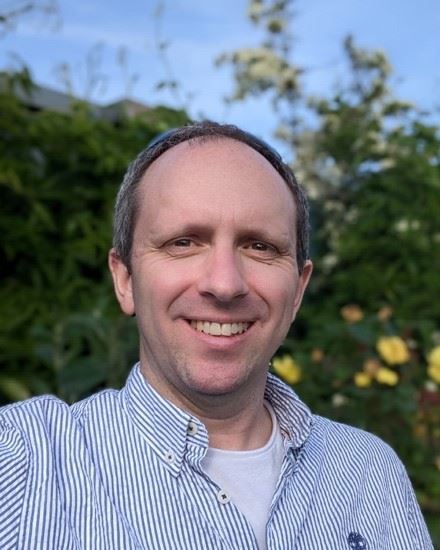 What is your current position and location?
What is your current position and location? What is your current position and location?
What is your current position and location?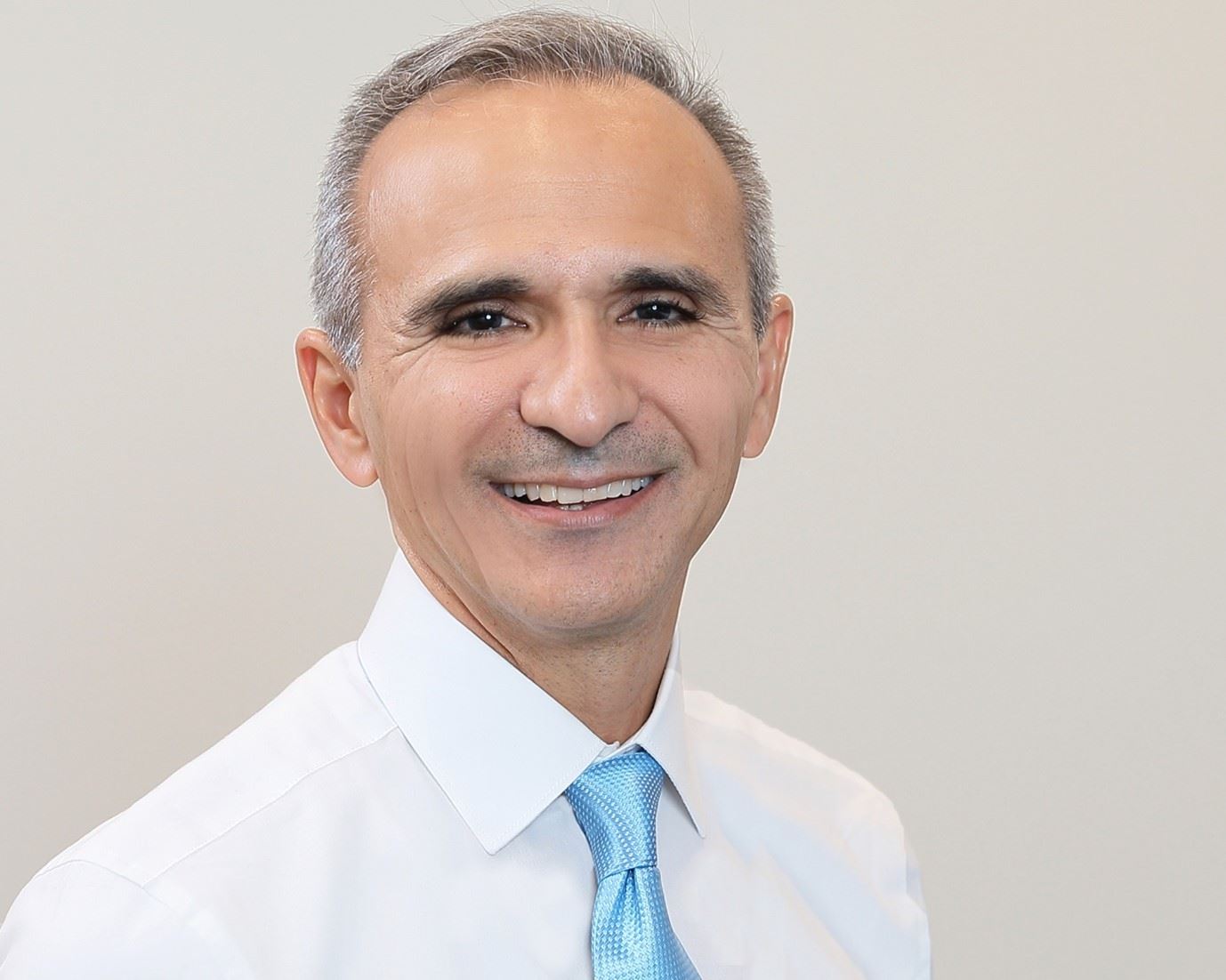 What is your current
position and location?
What is your current
position and location?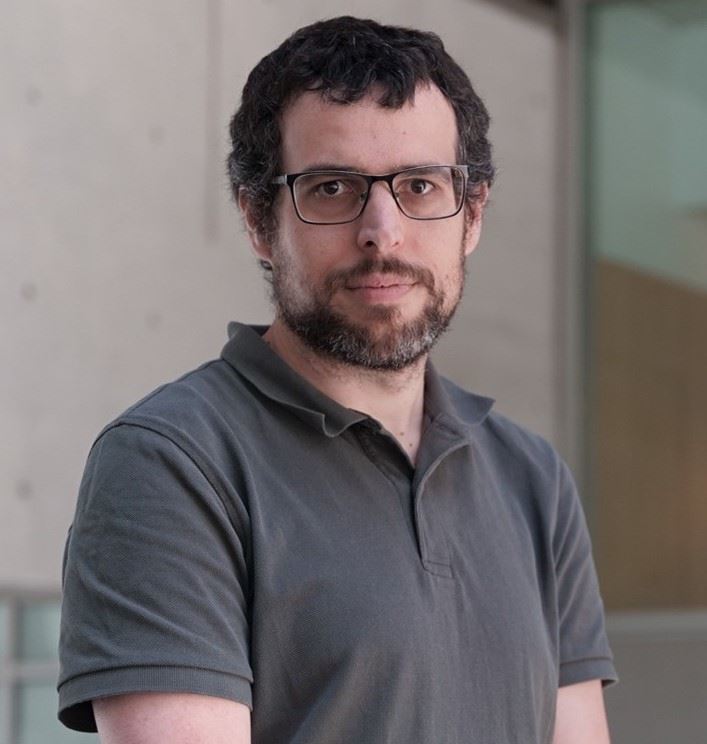 What is your current position and location?
What is your current position and location?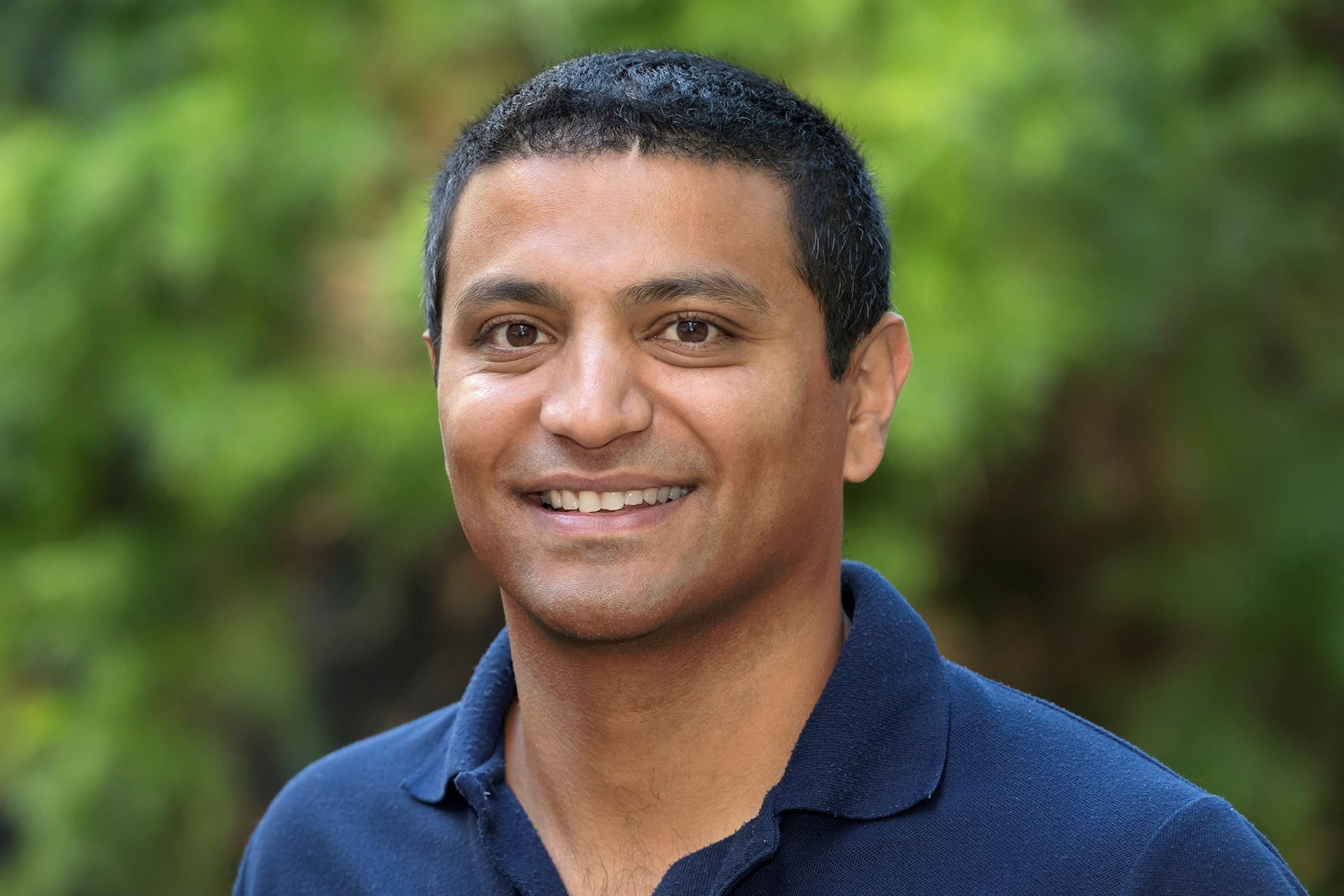 What is your current position and location?
What is your current position and location?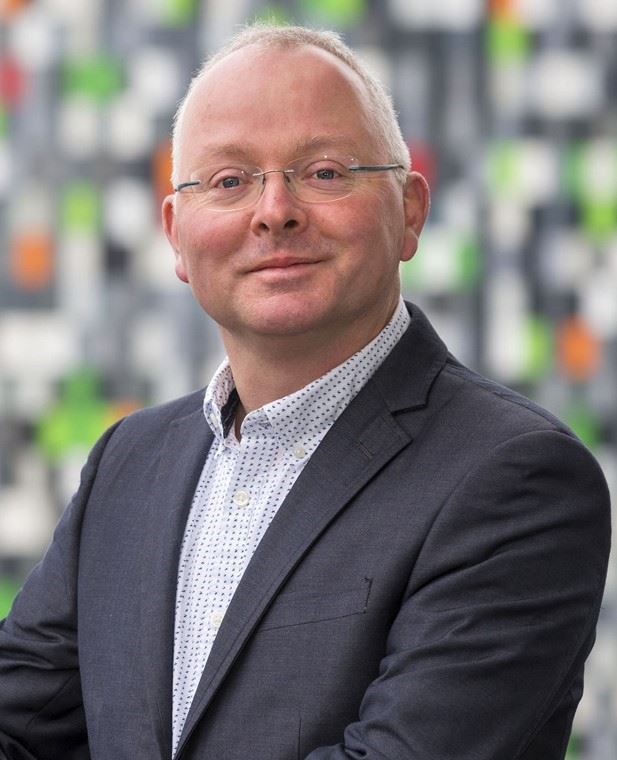 What is your current position and location?
What is your current position and location?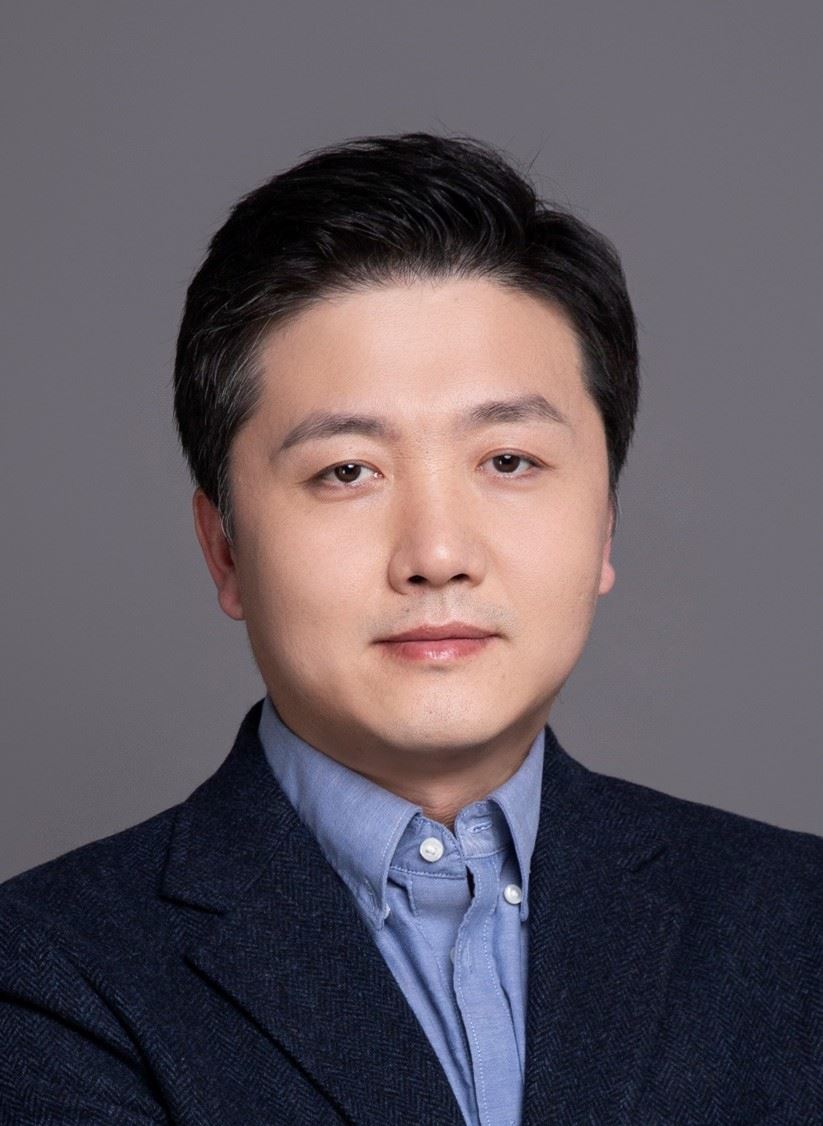 What is your current position and location?
What is your current position and location?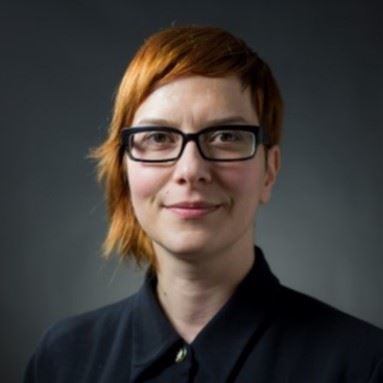 What is your current position and location?
What is your current position and location?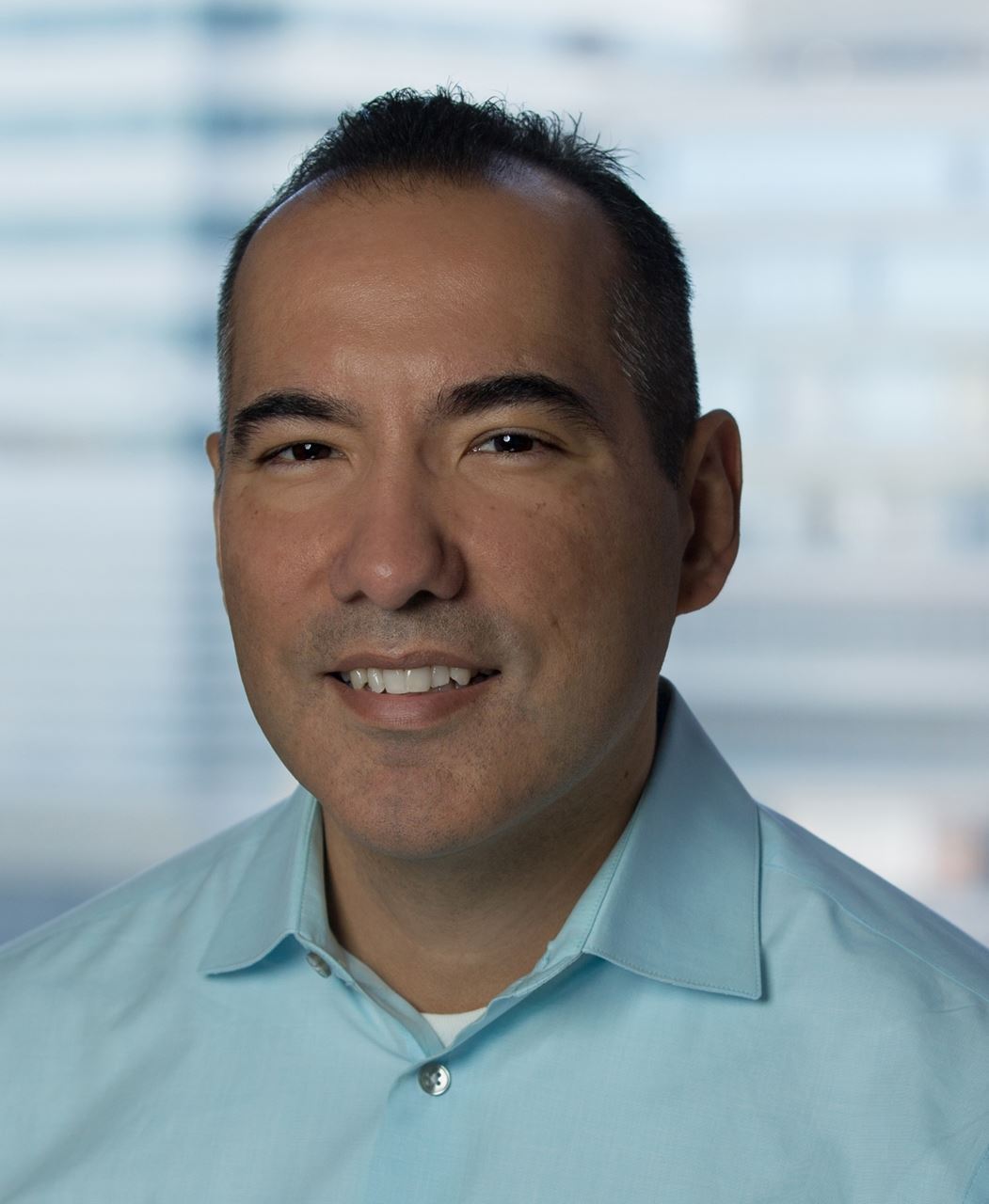 What is your current position and location?
What is your current position and location?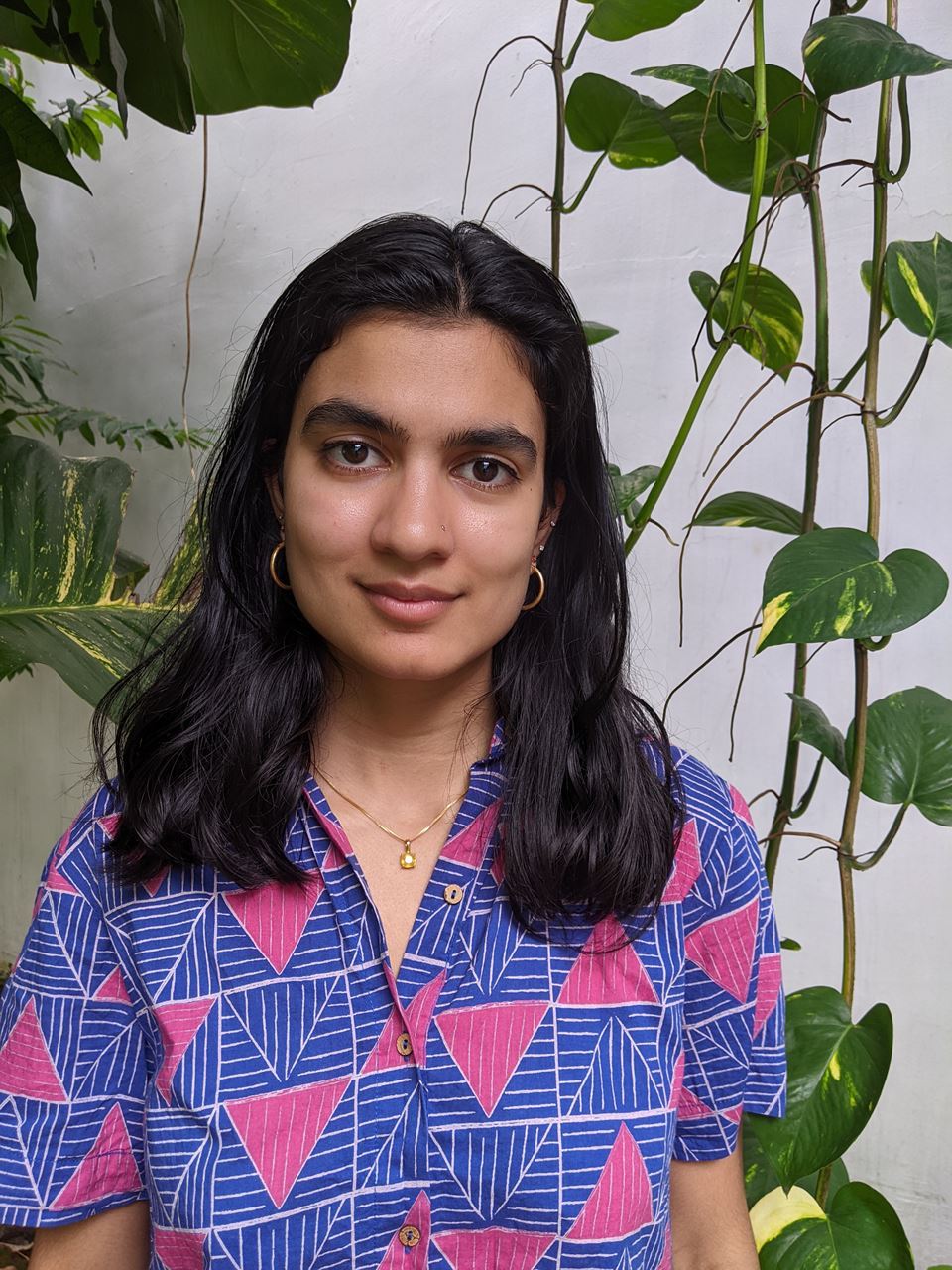 What is your current position and location?
What is your current position and location?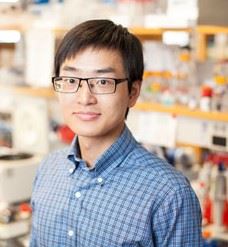 What is your current position and location?
What is your current position and location?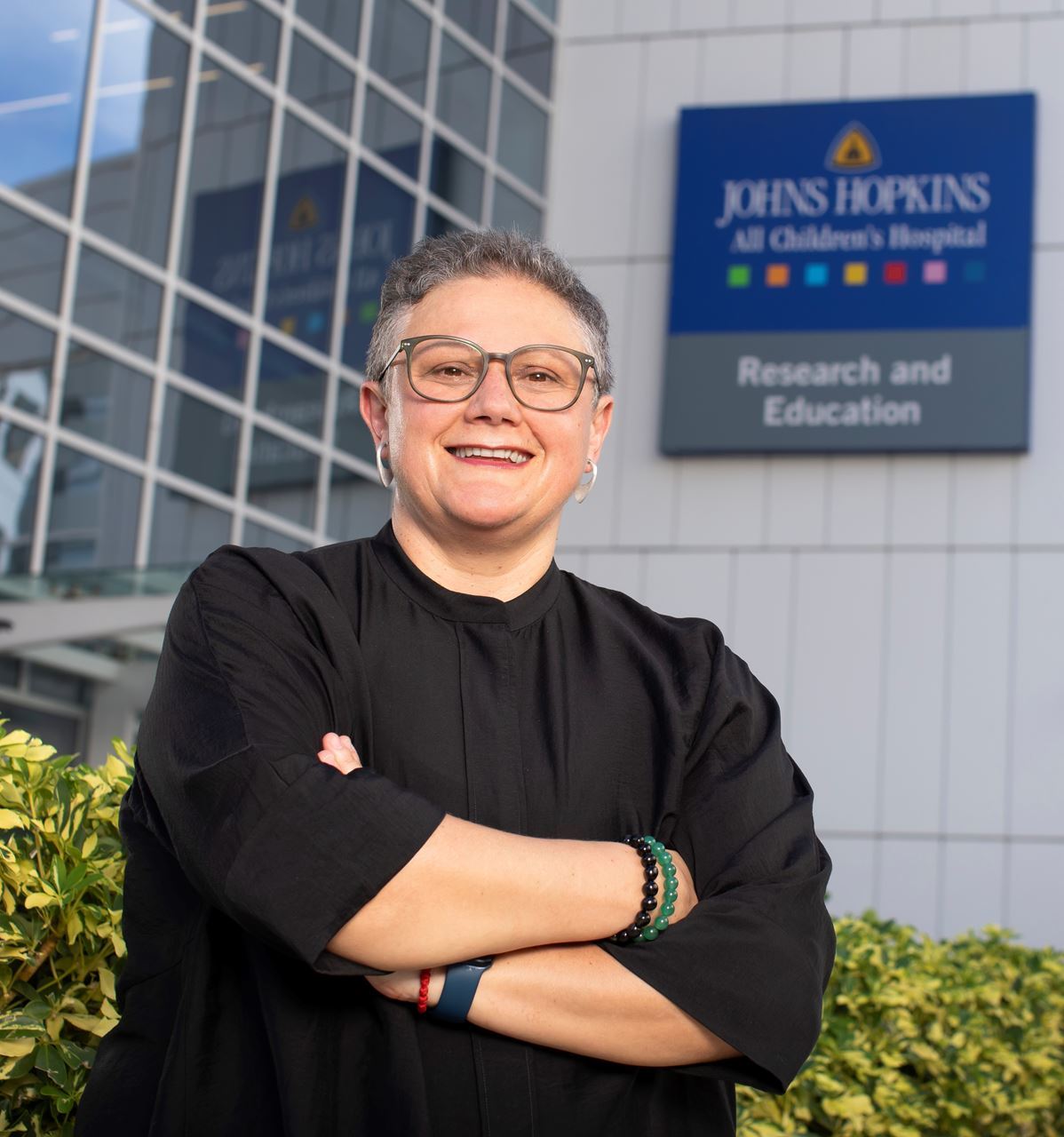 What is your current position and location?
What is your current position and location?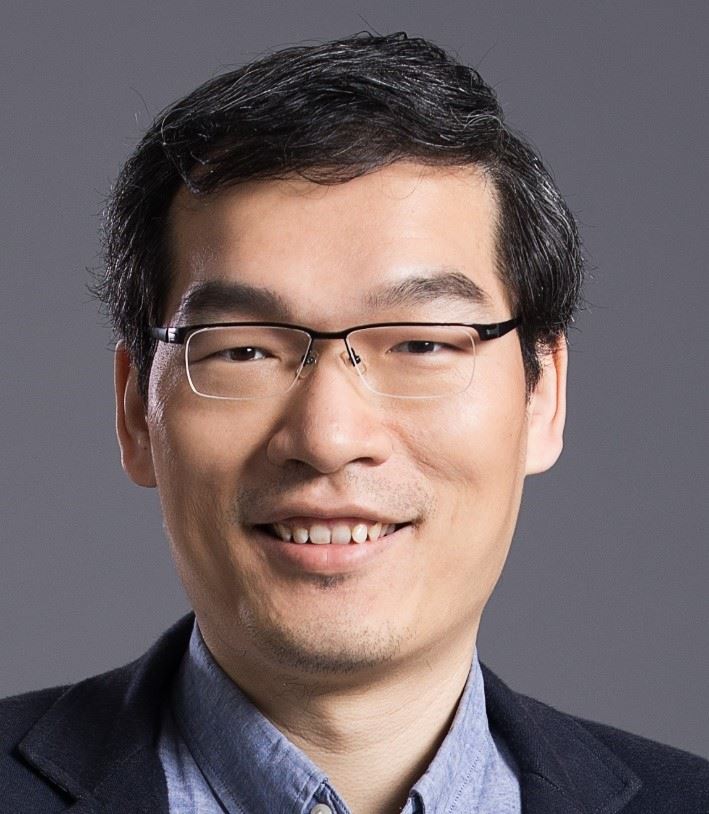

.jpg) What is your current position and location?
What is your current position and location?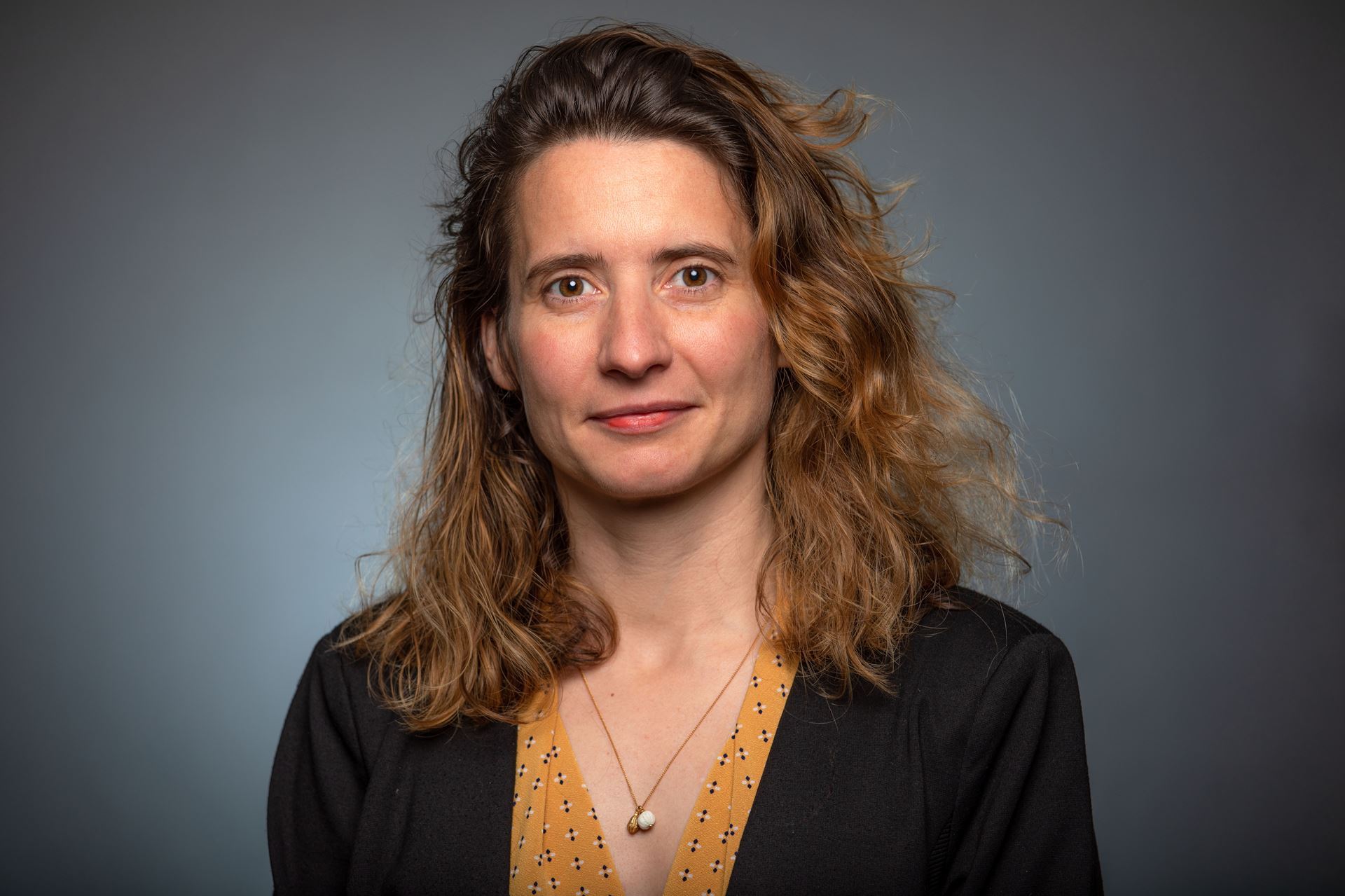 What is your current position and location?
What is your current position and location?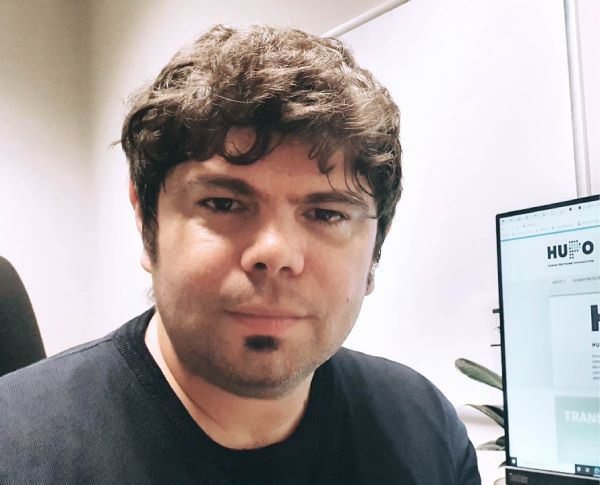
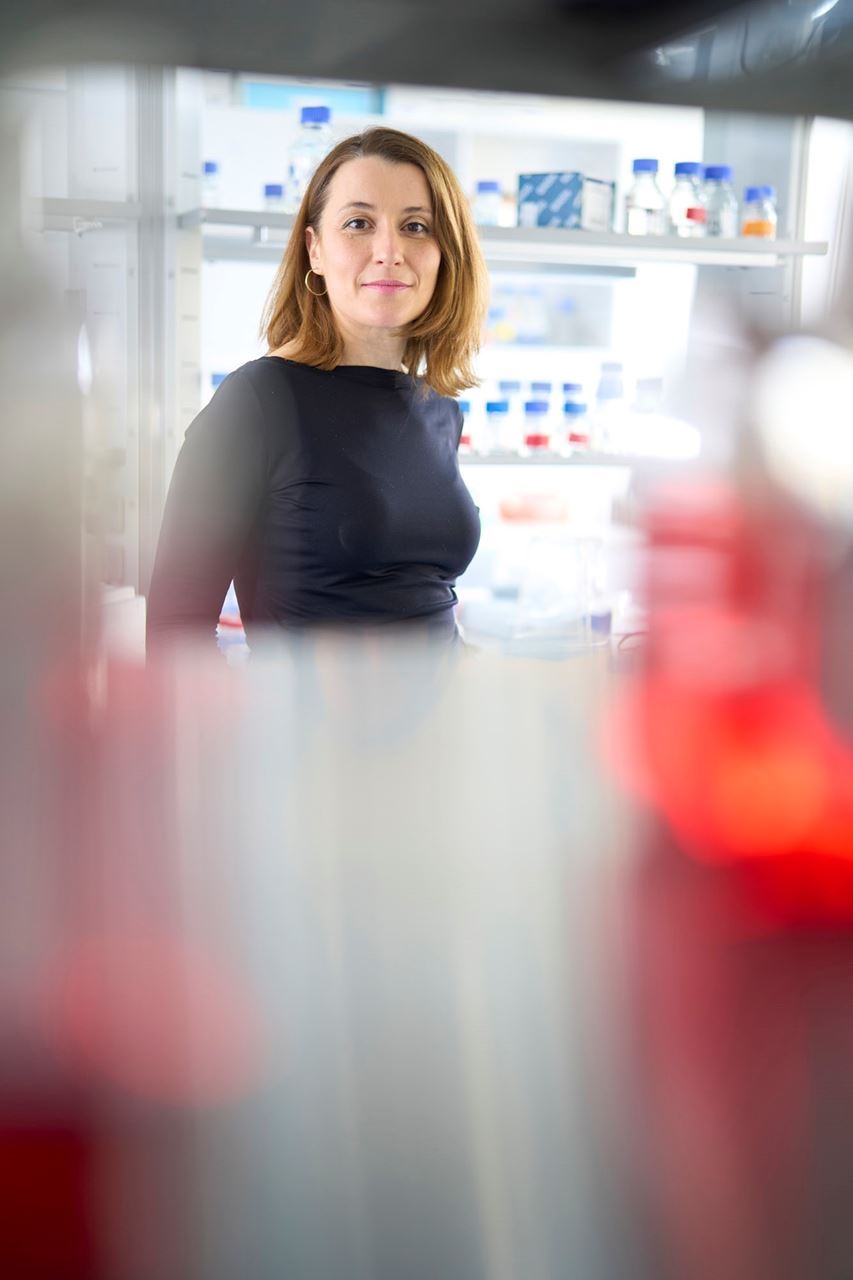 Photographer: Jan Greune
Photographer: Jan Greune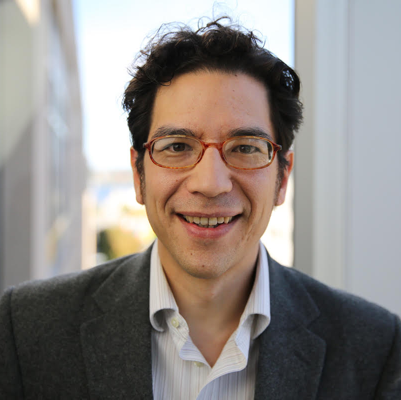
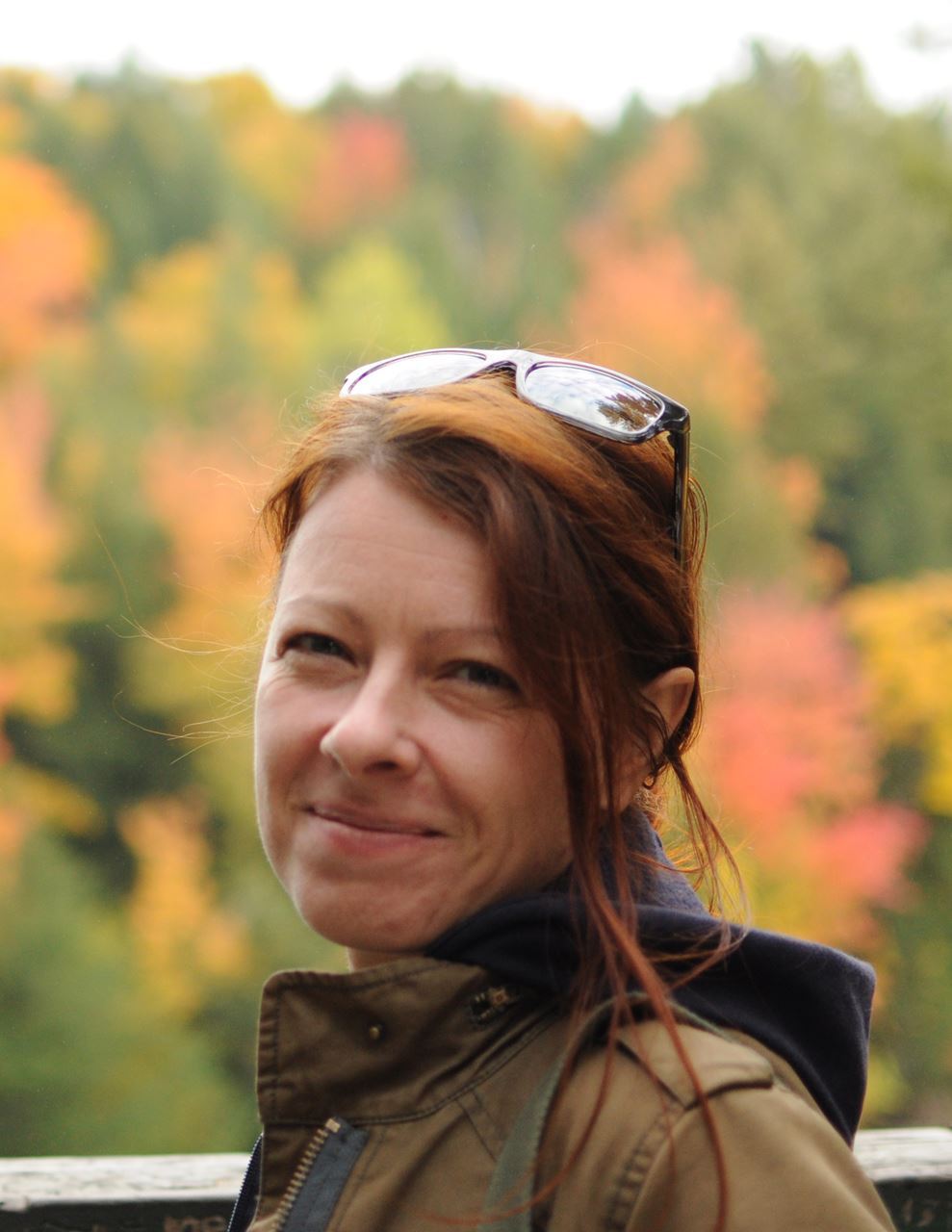

.png)


